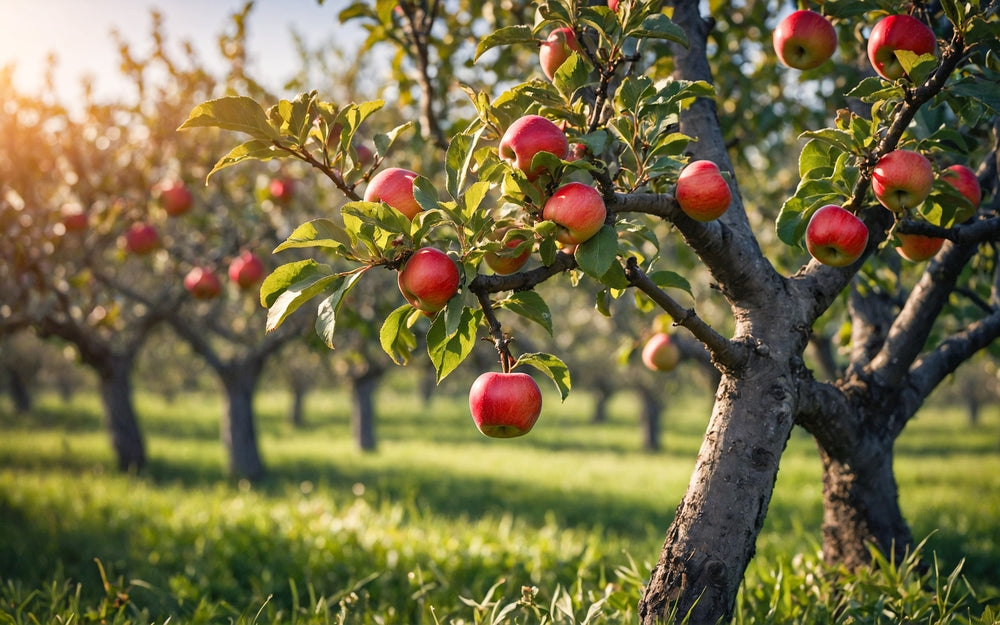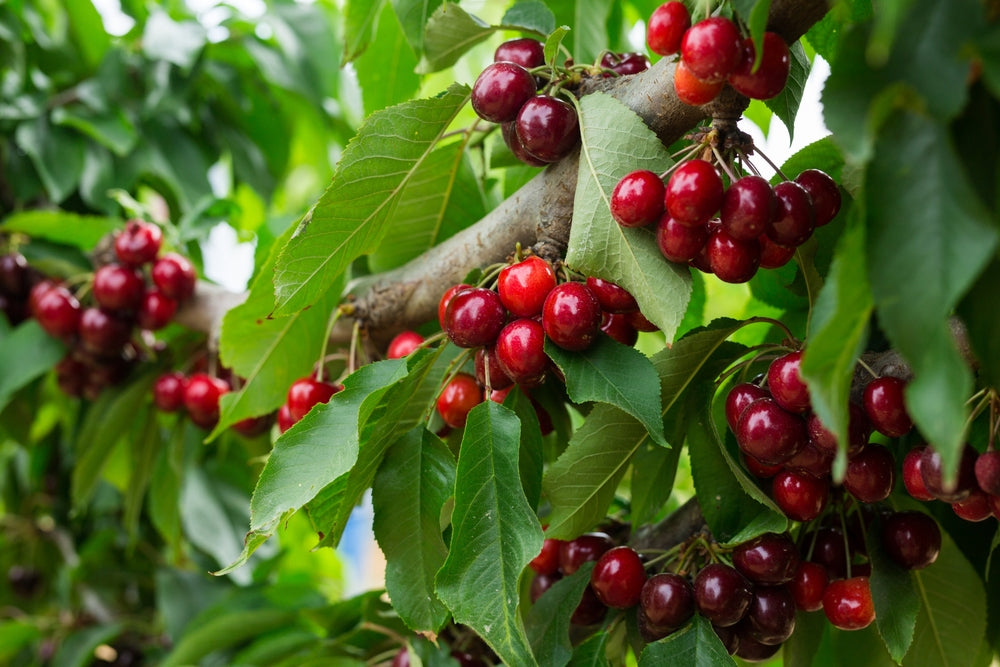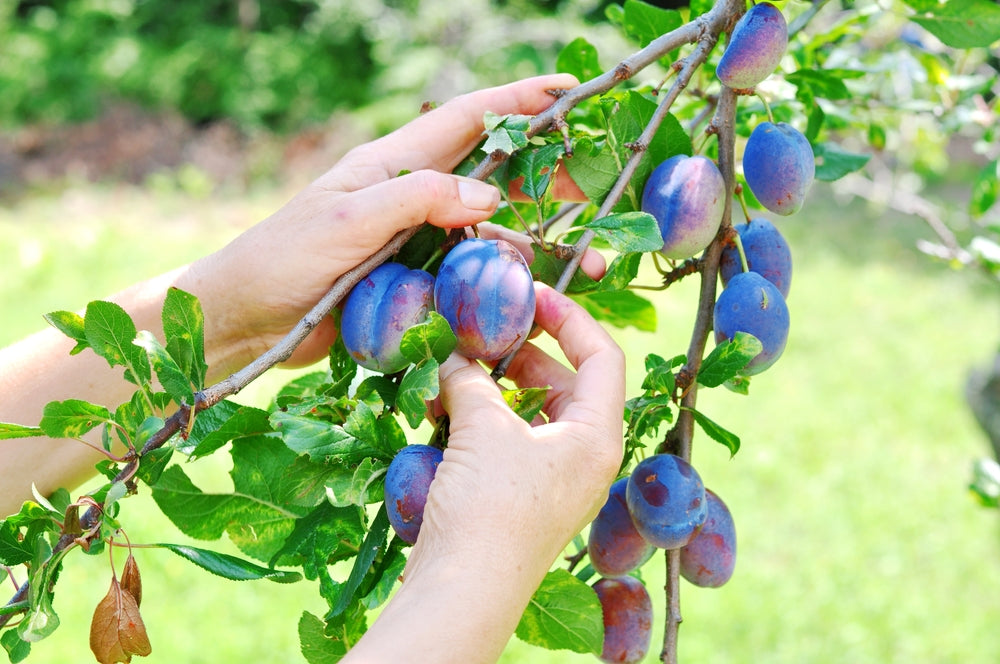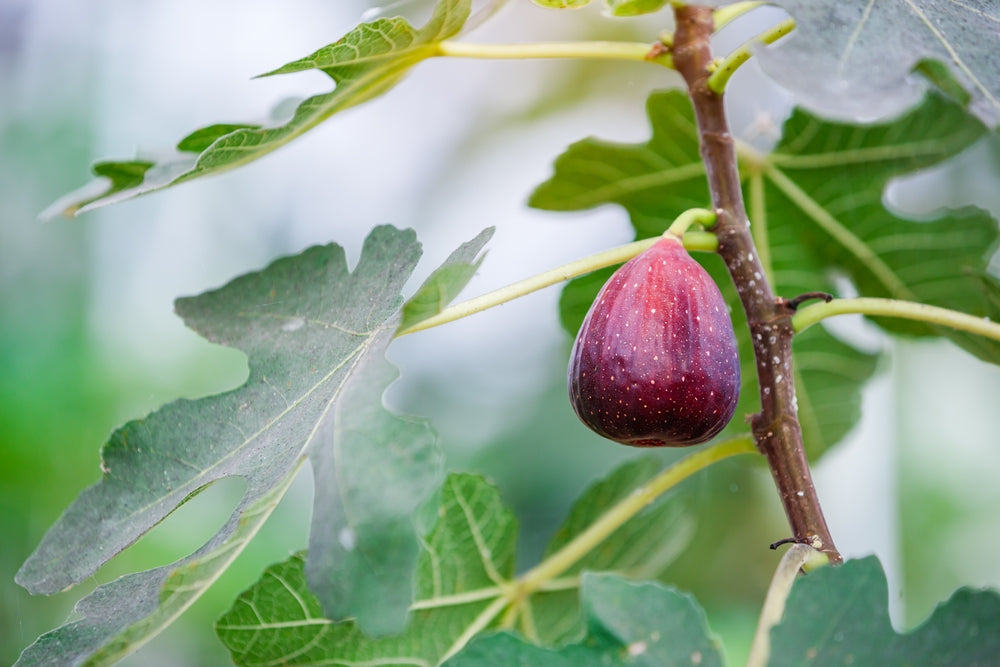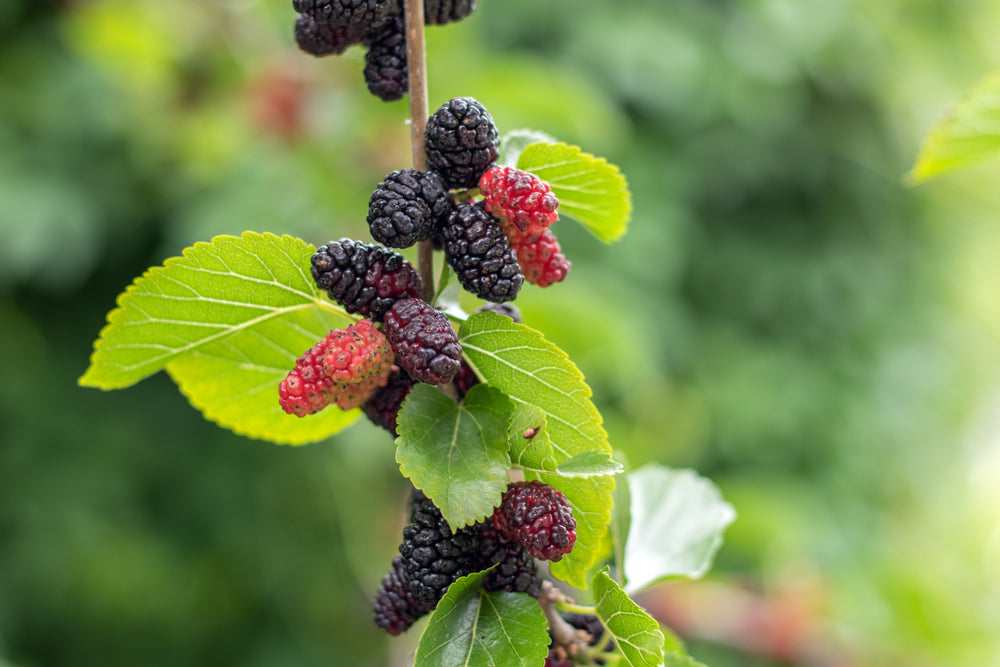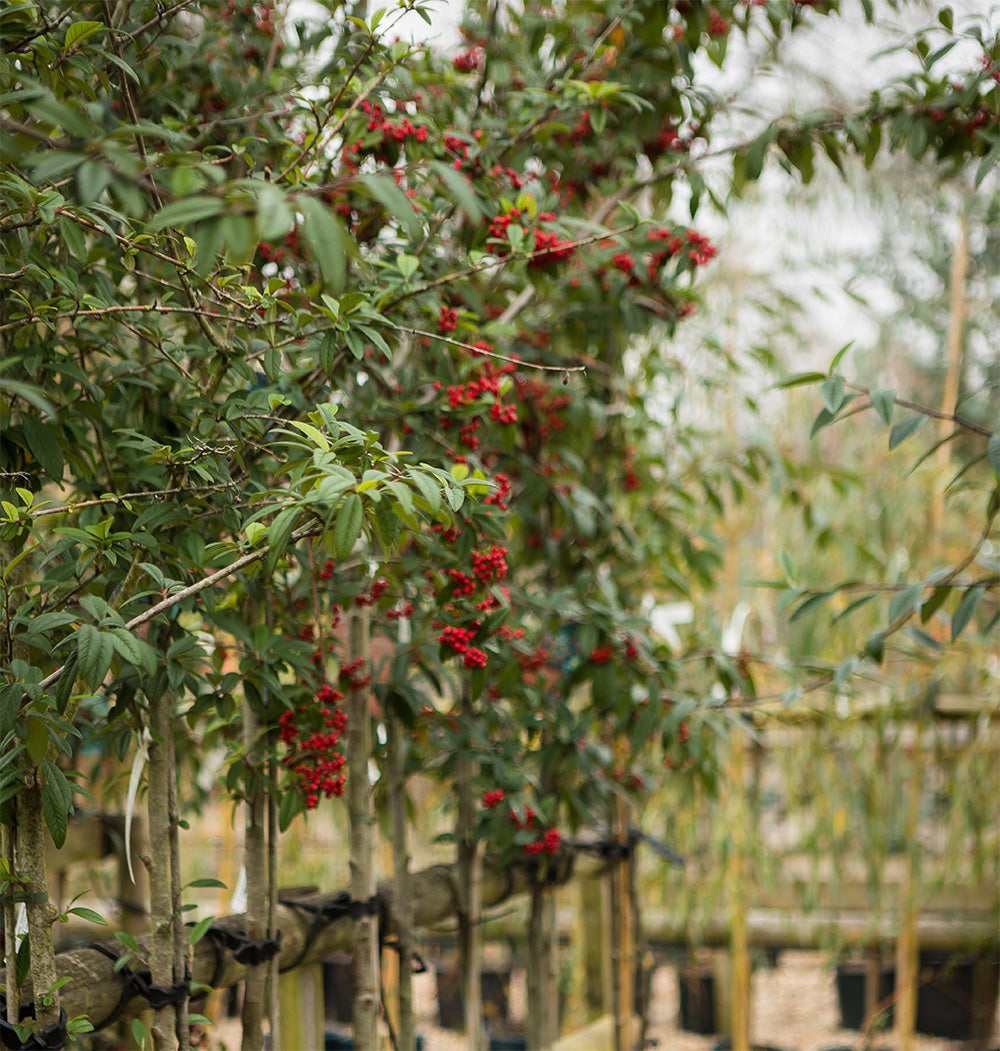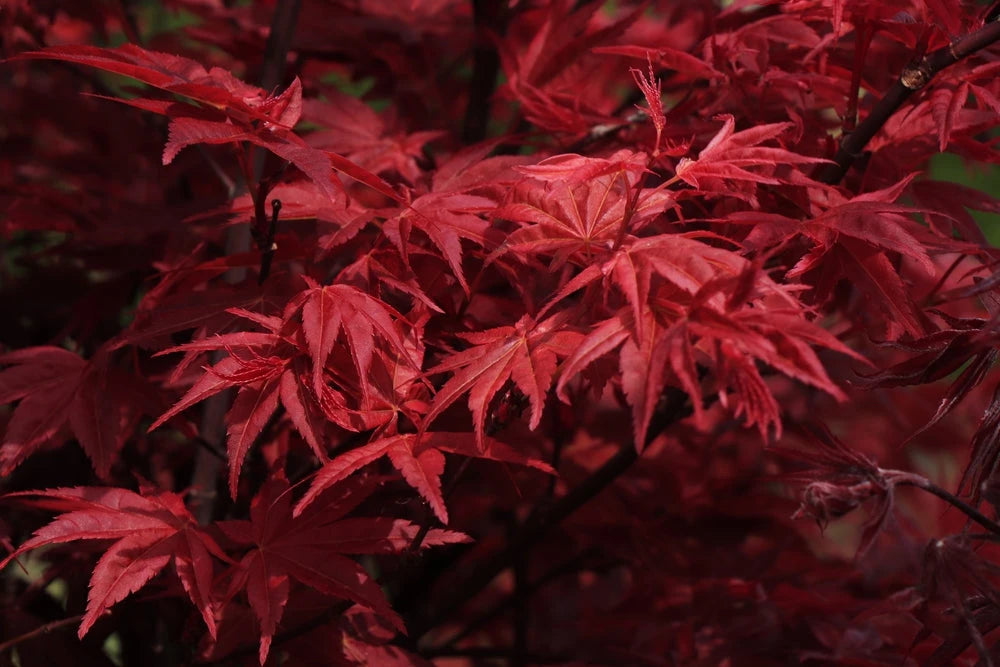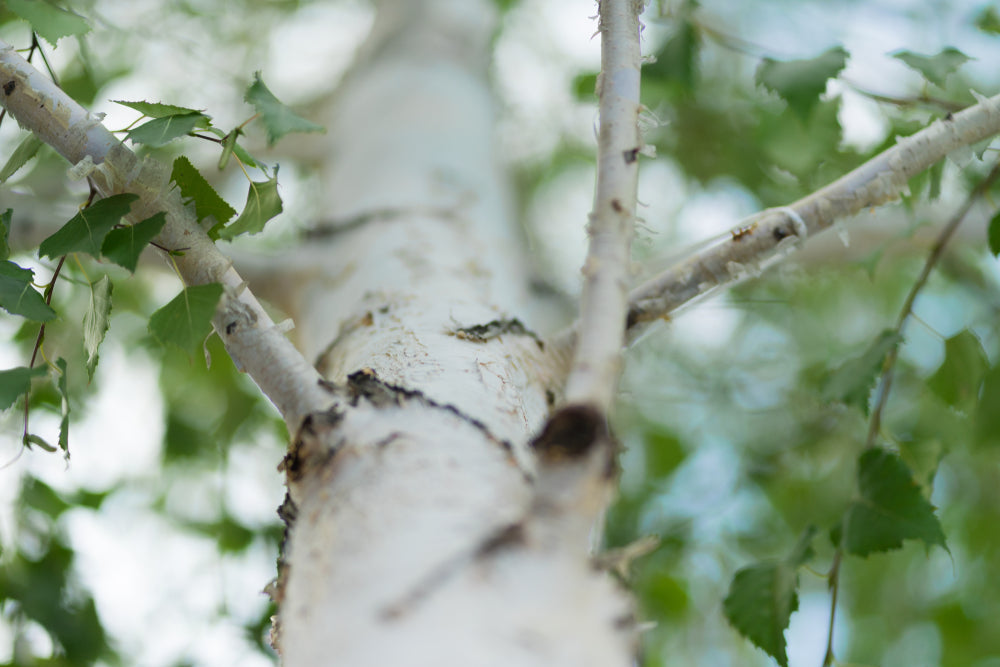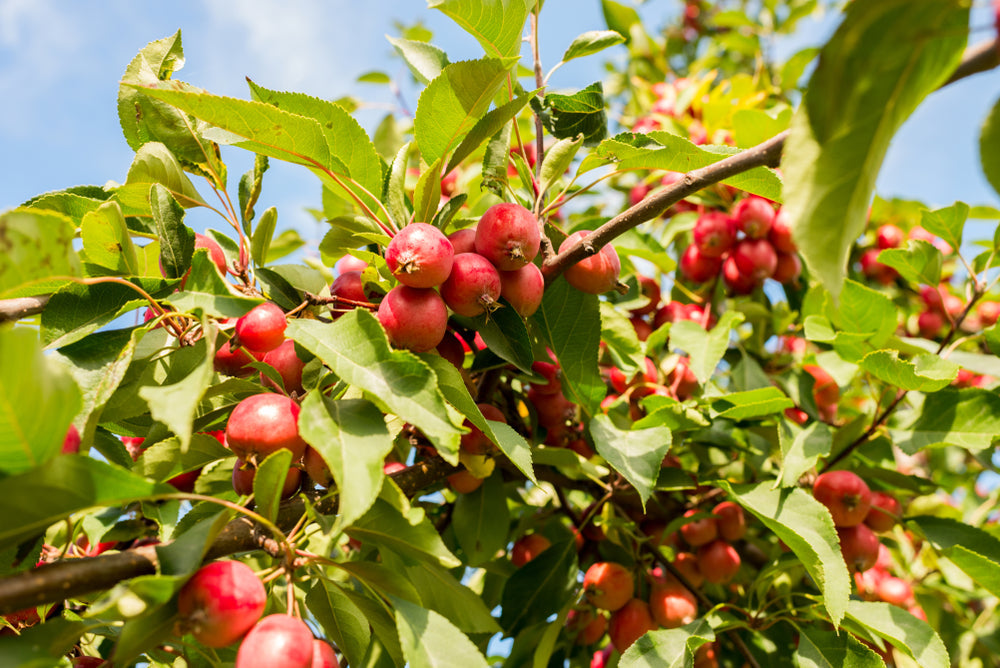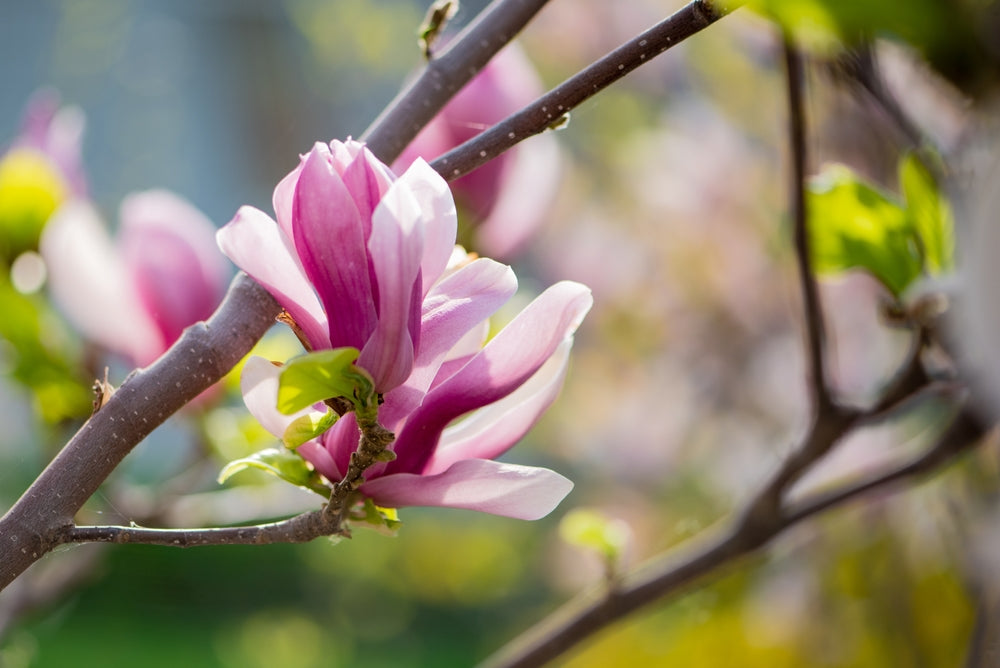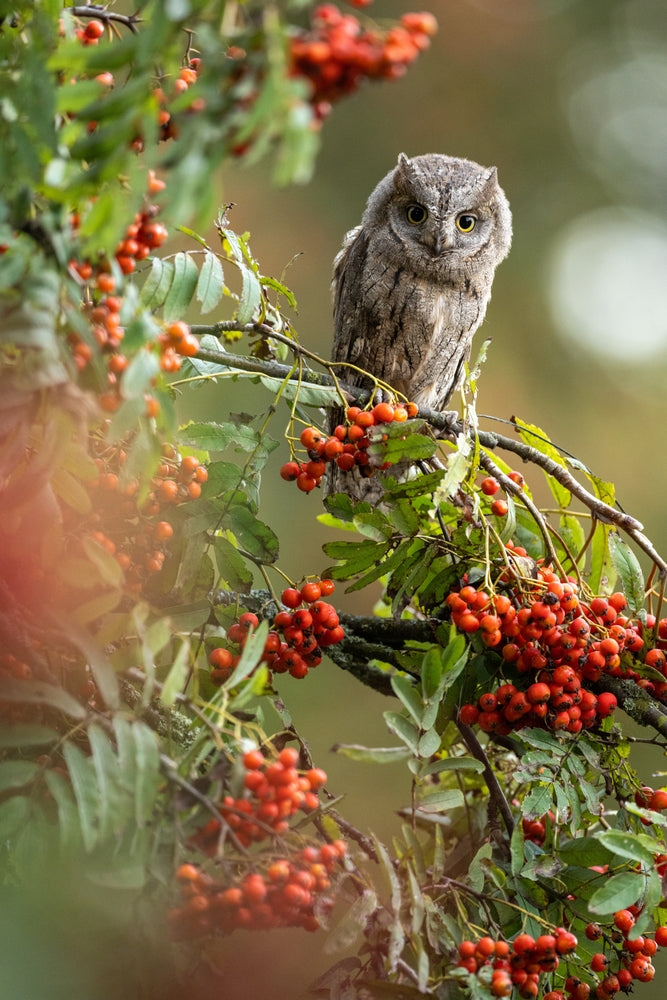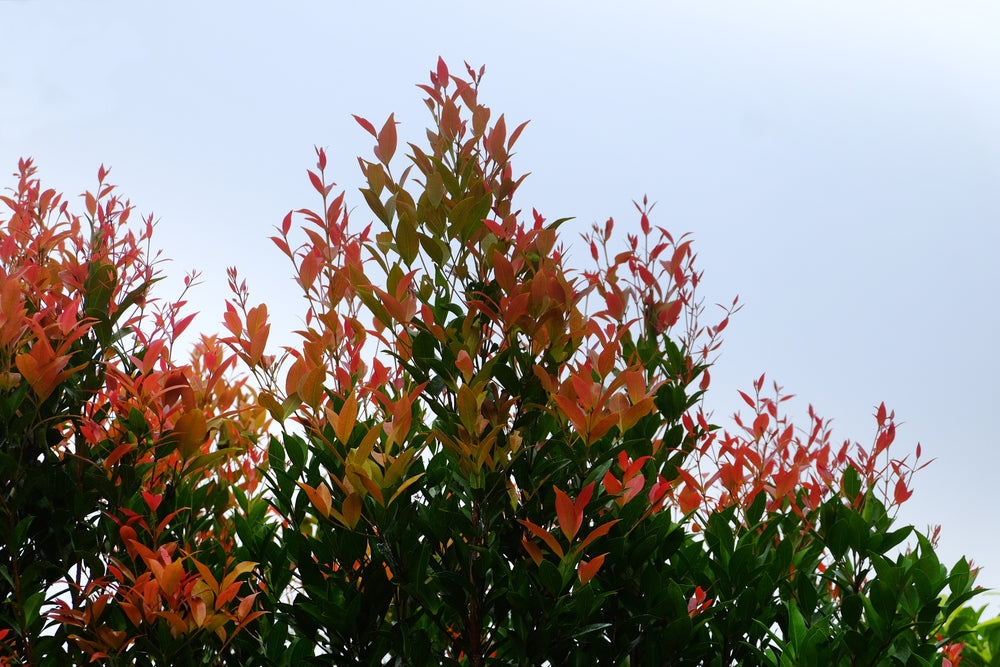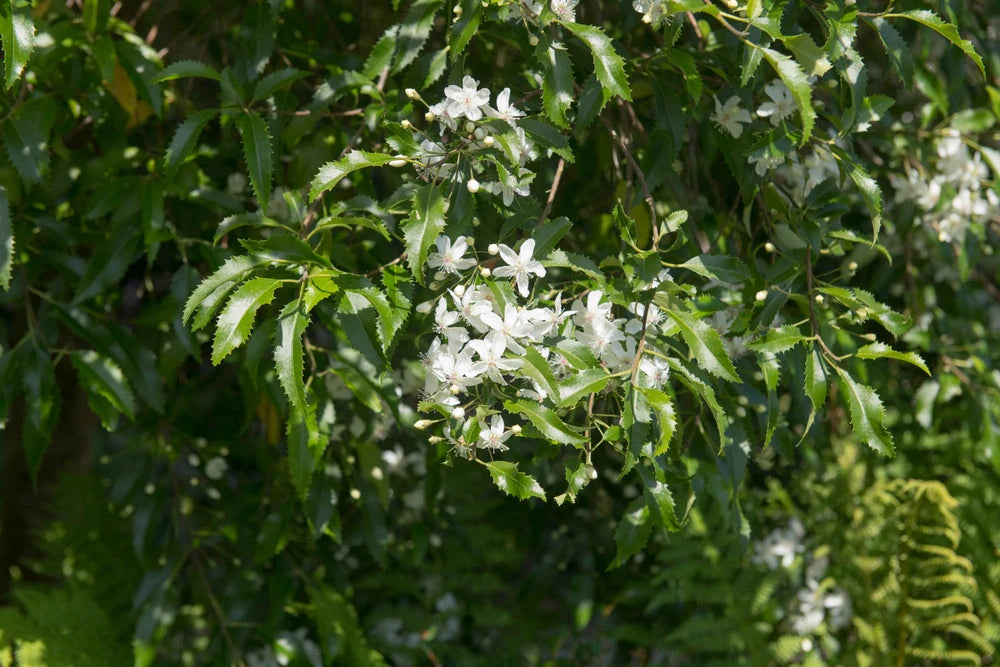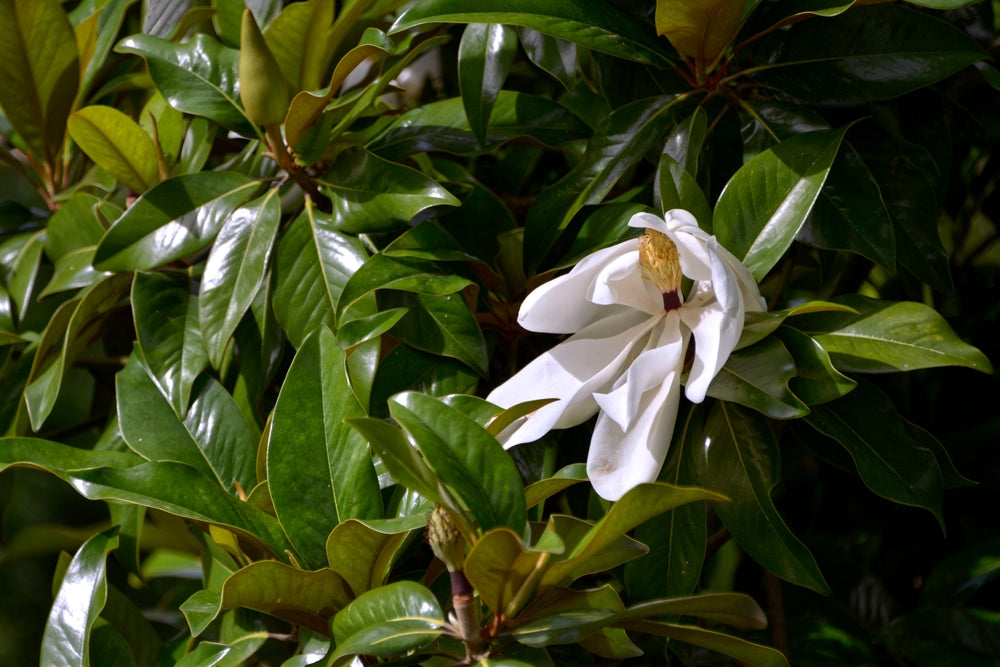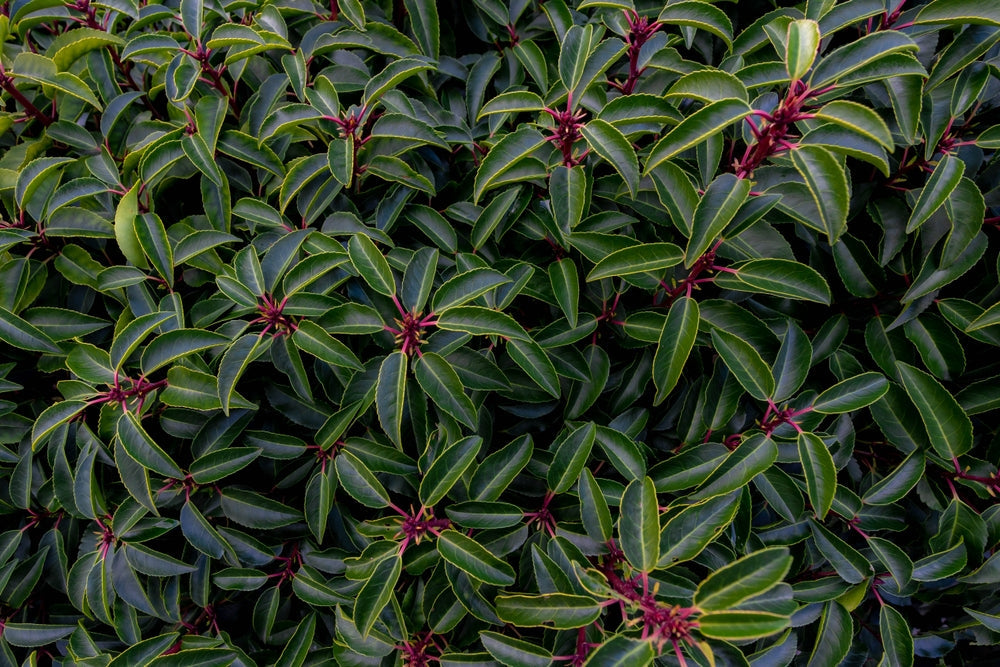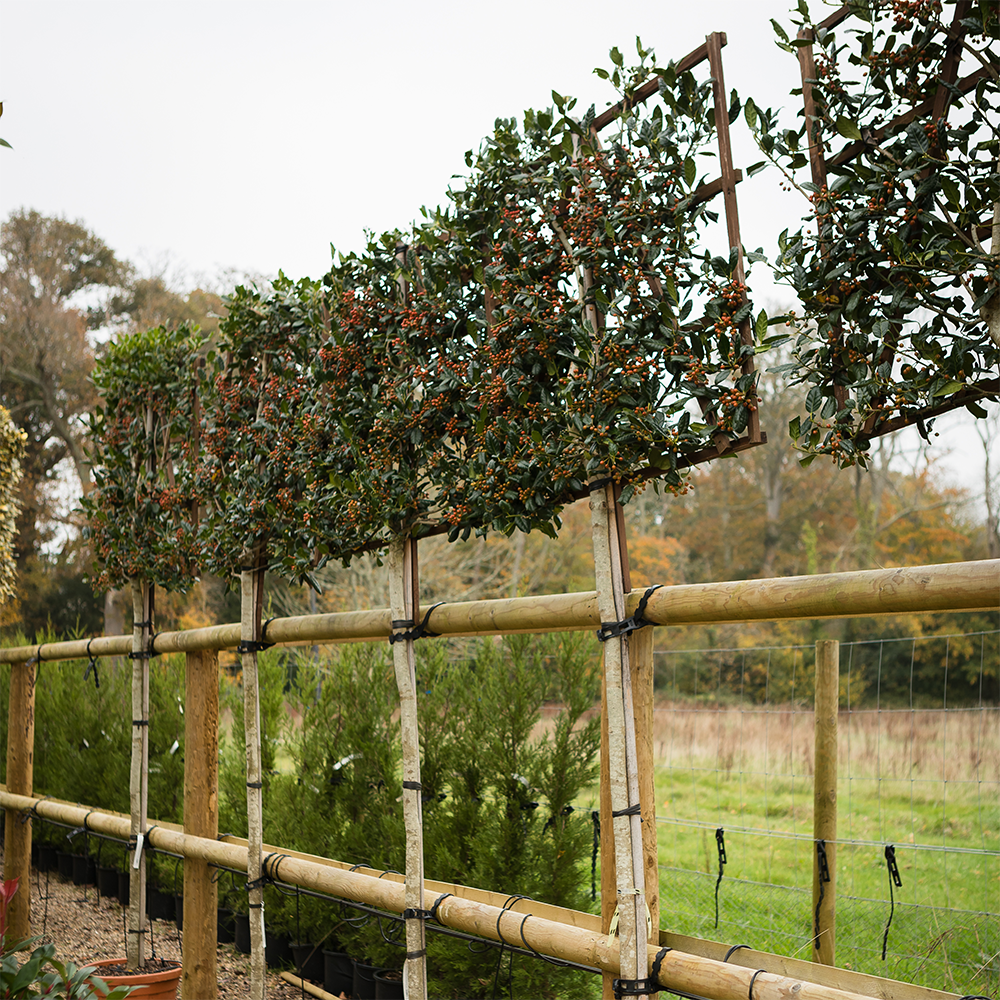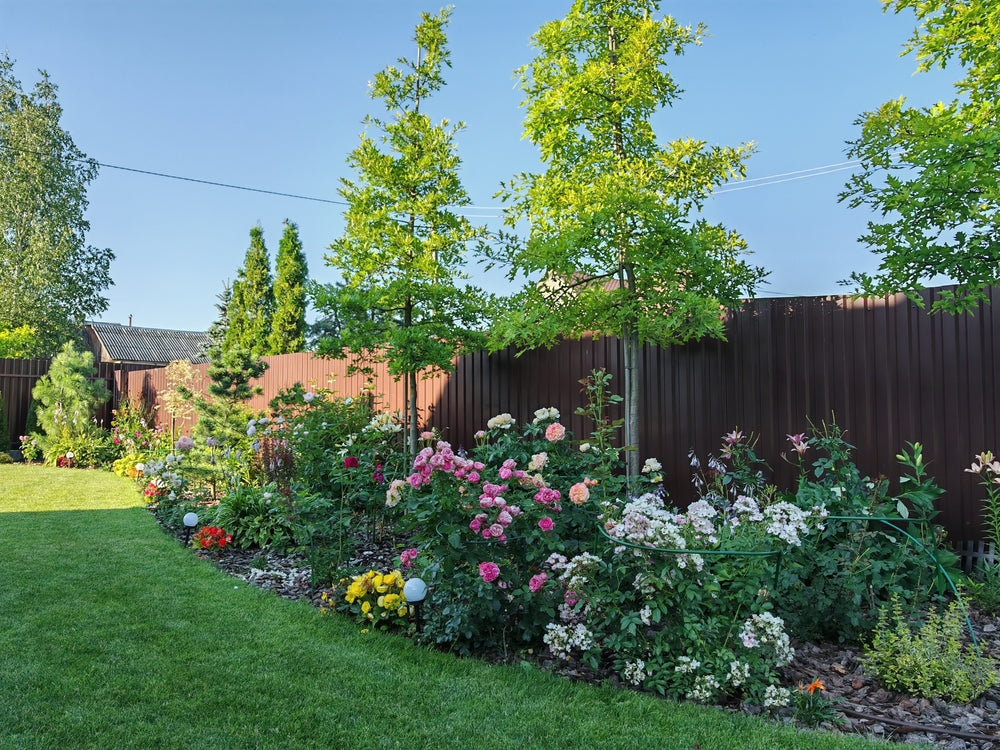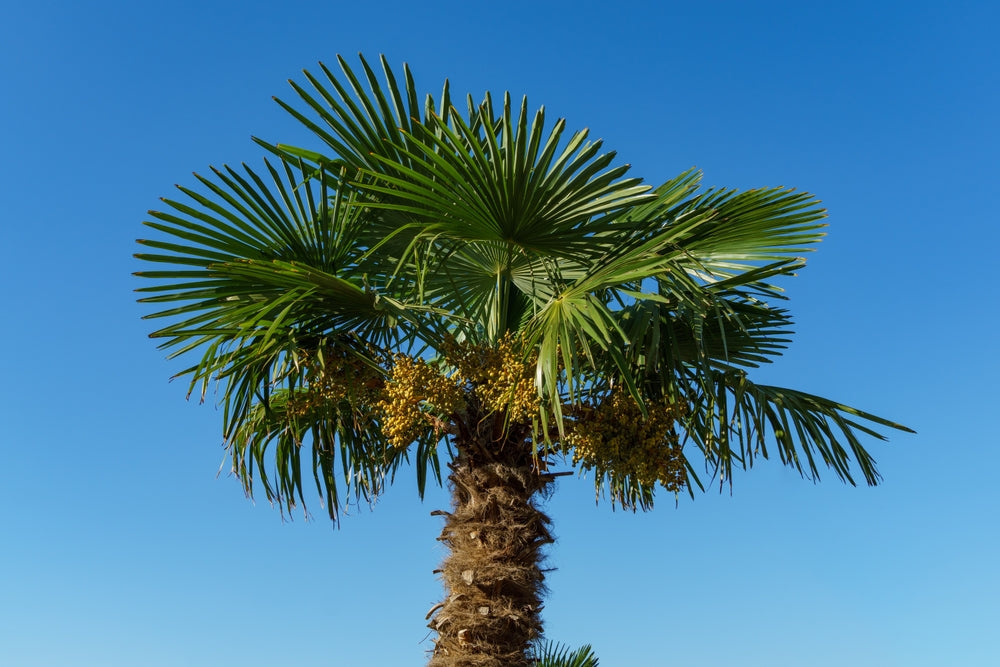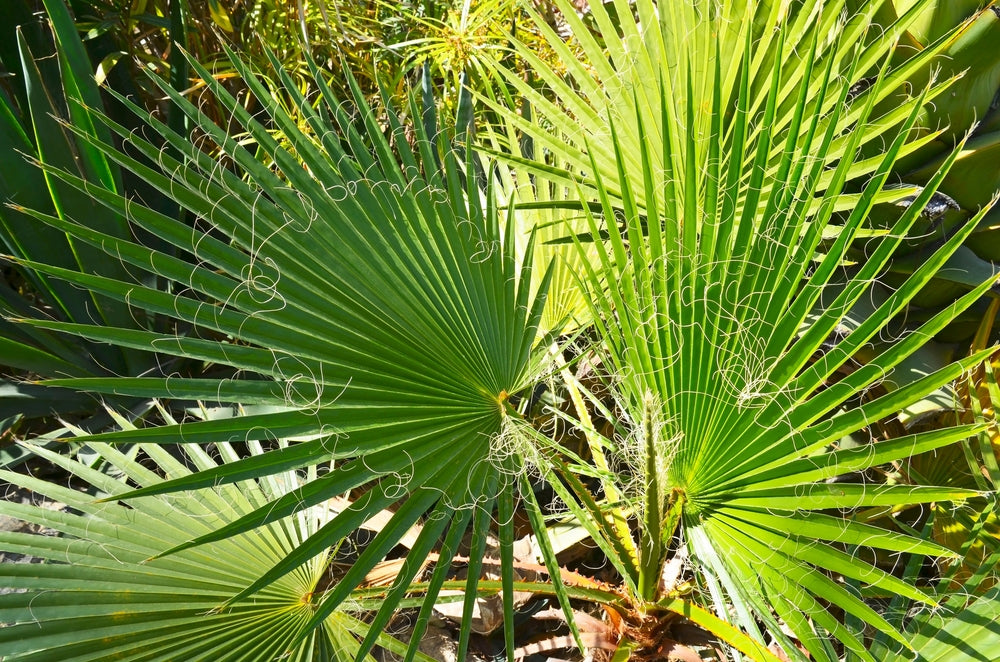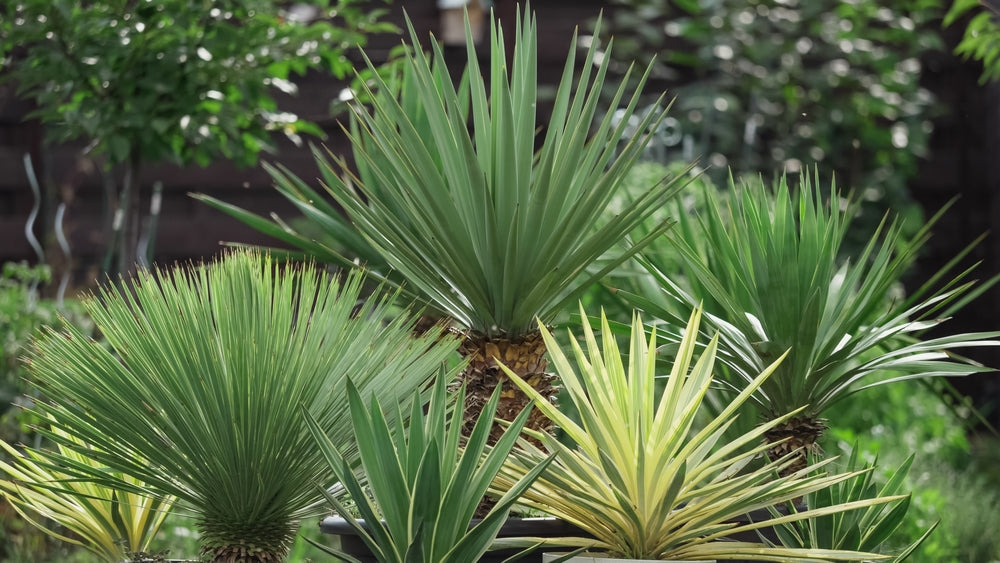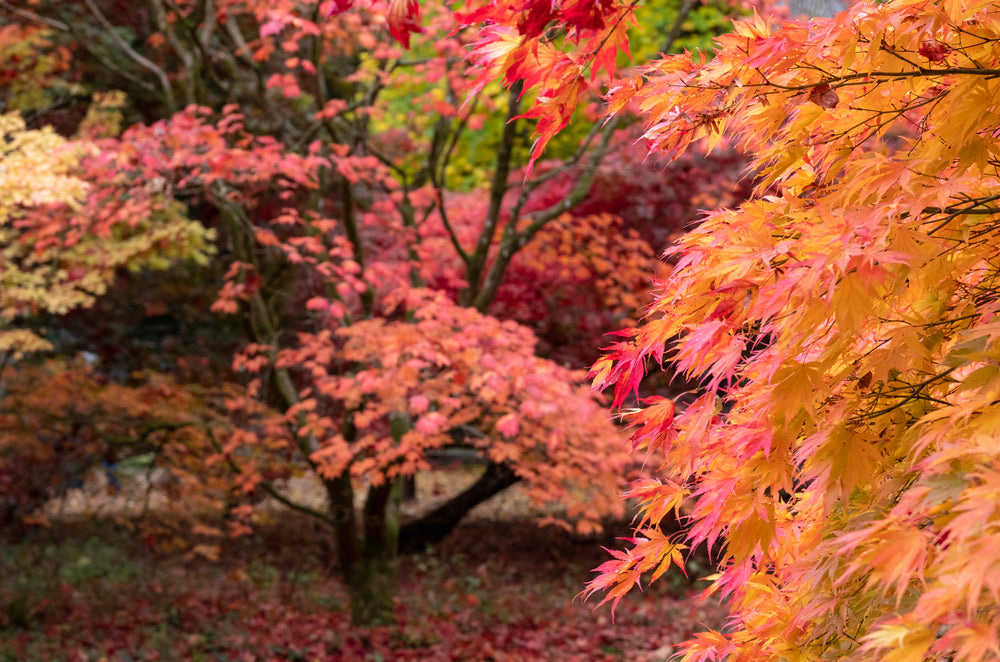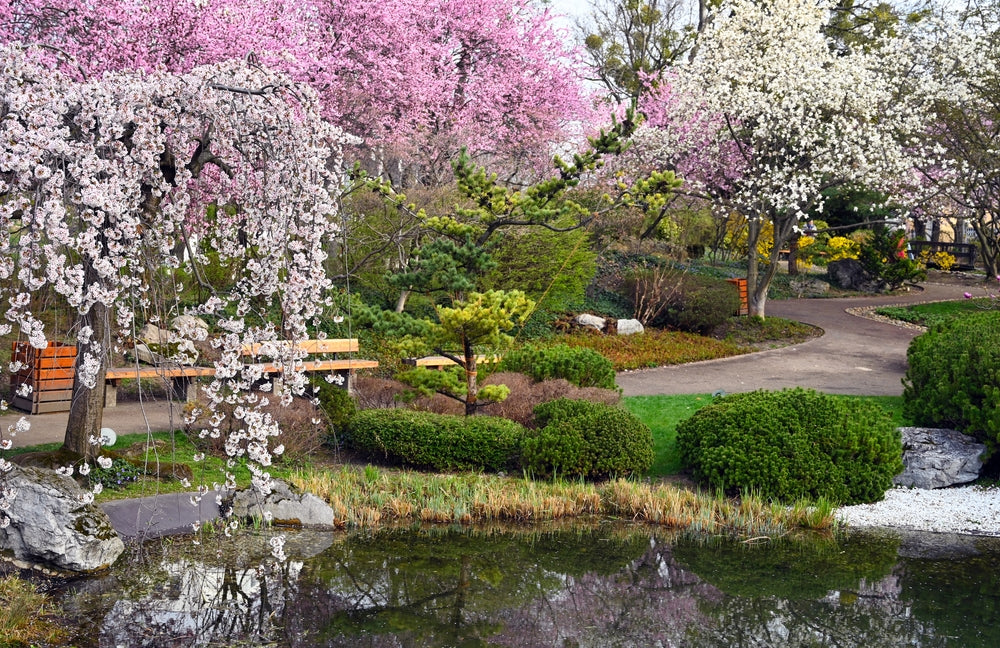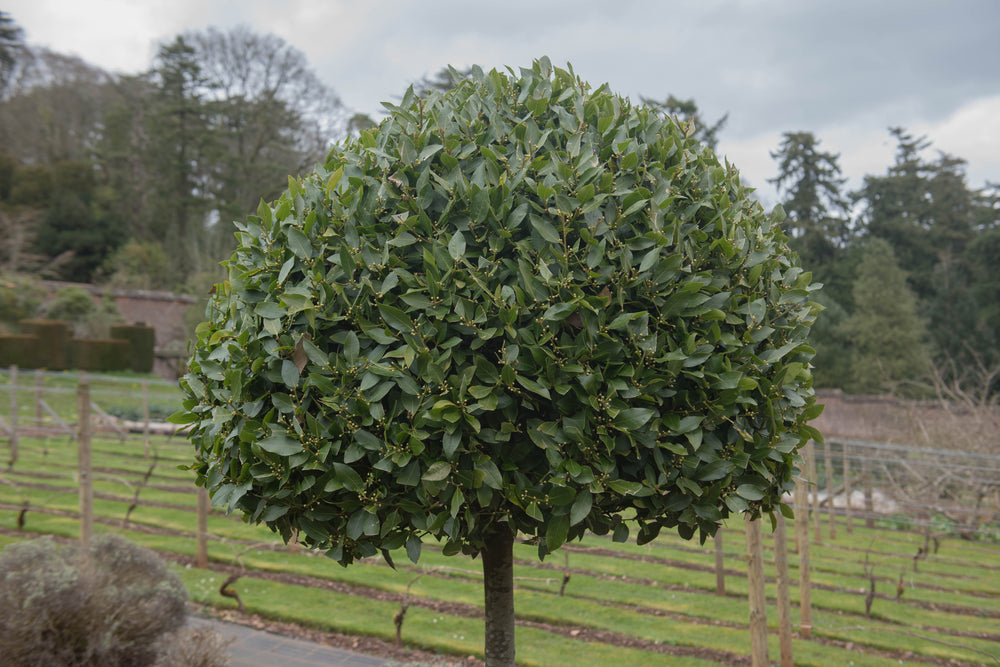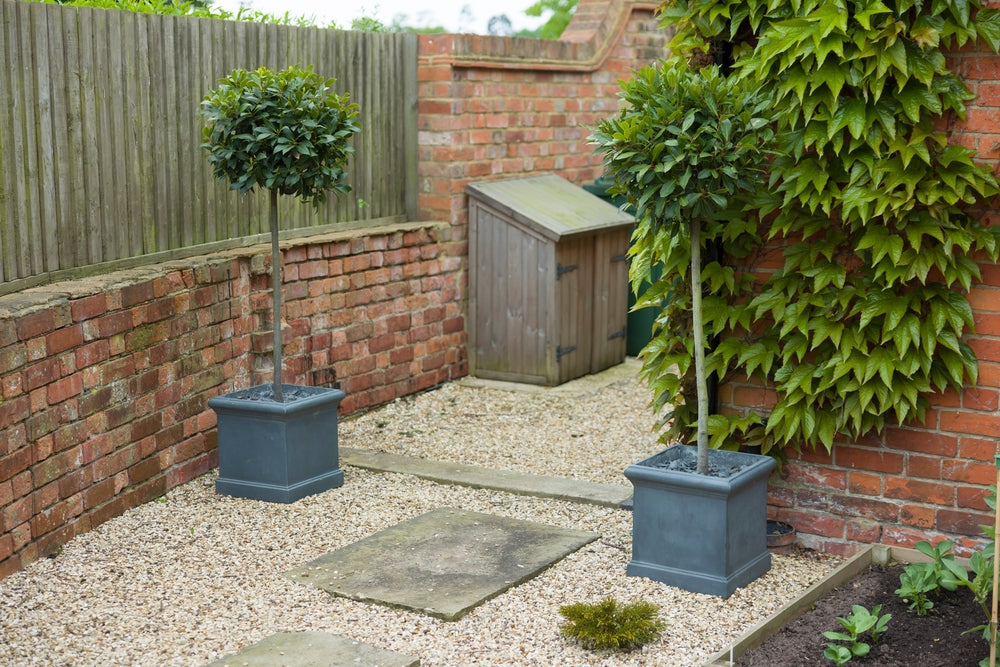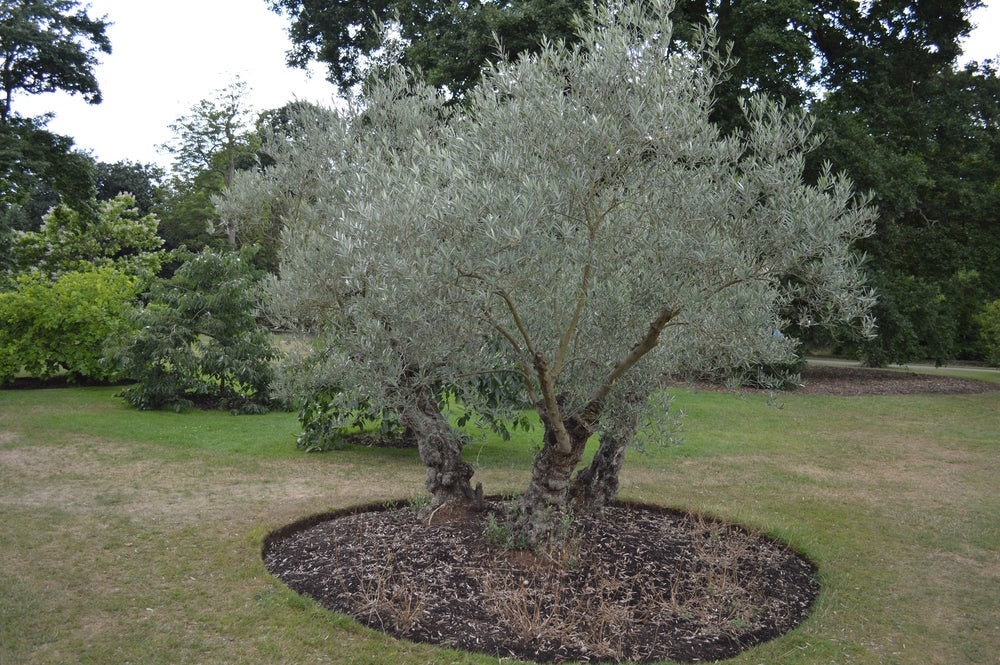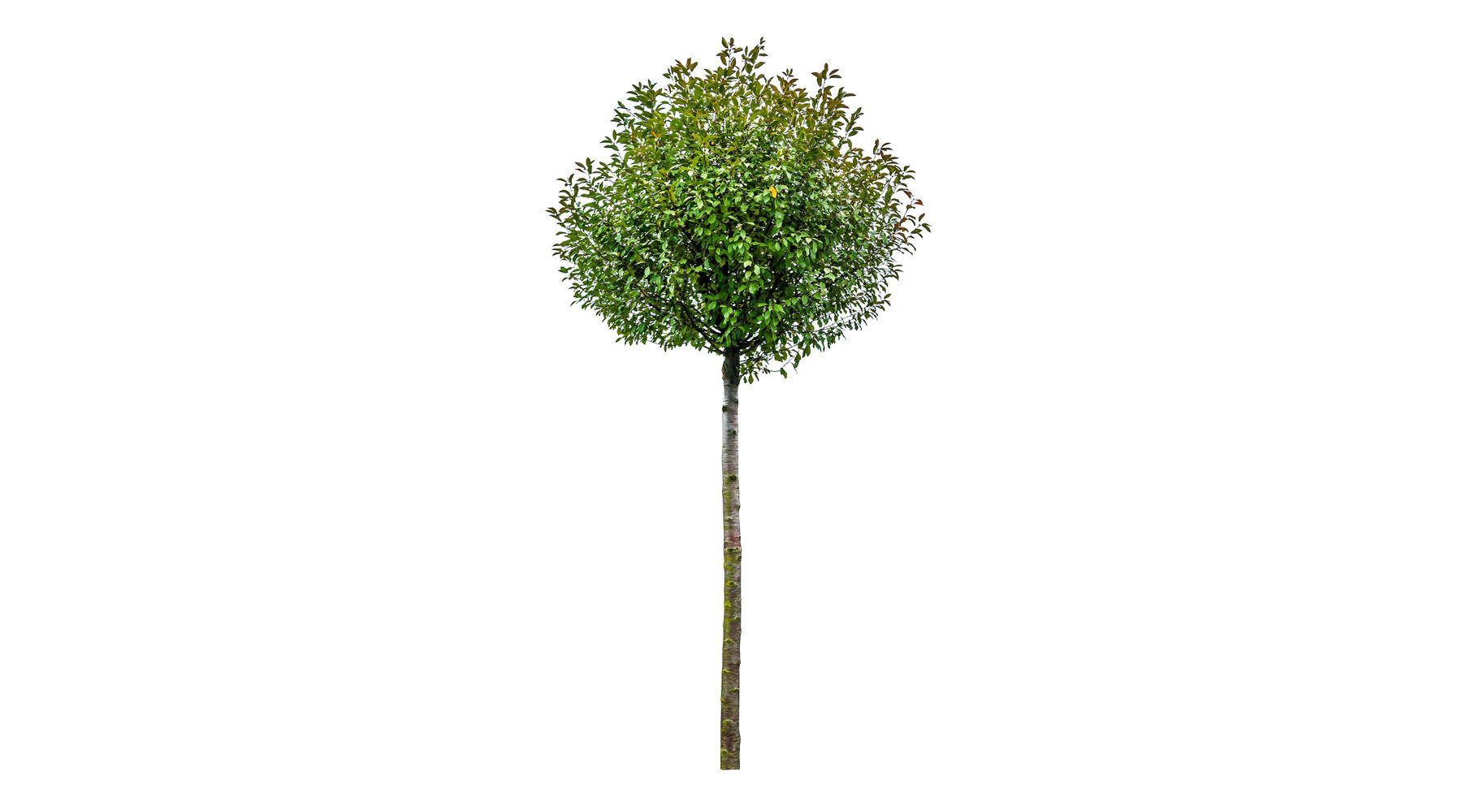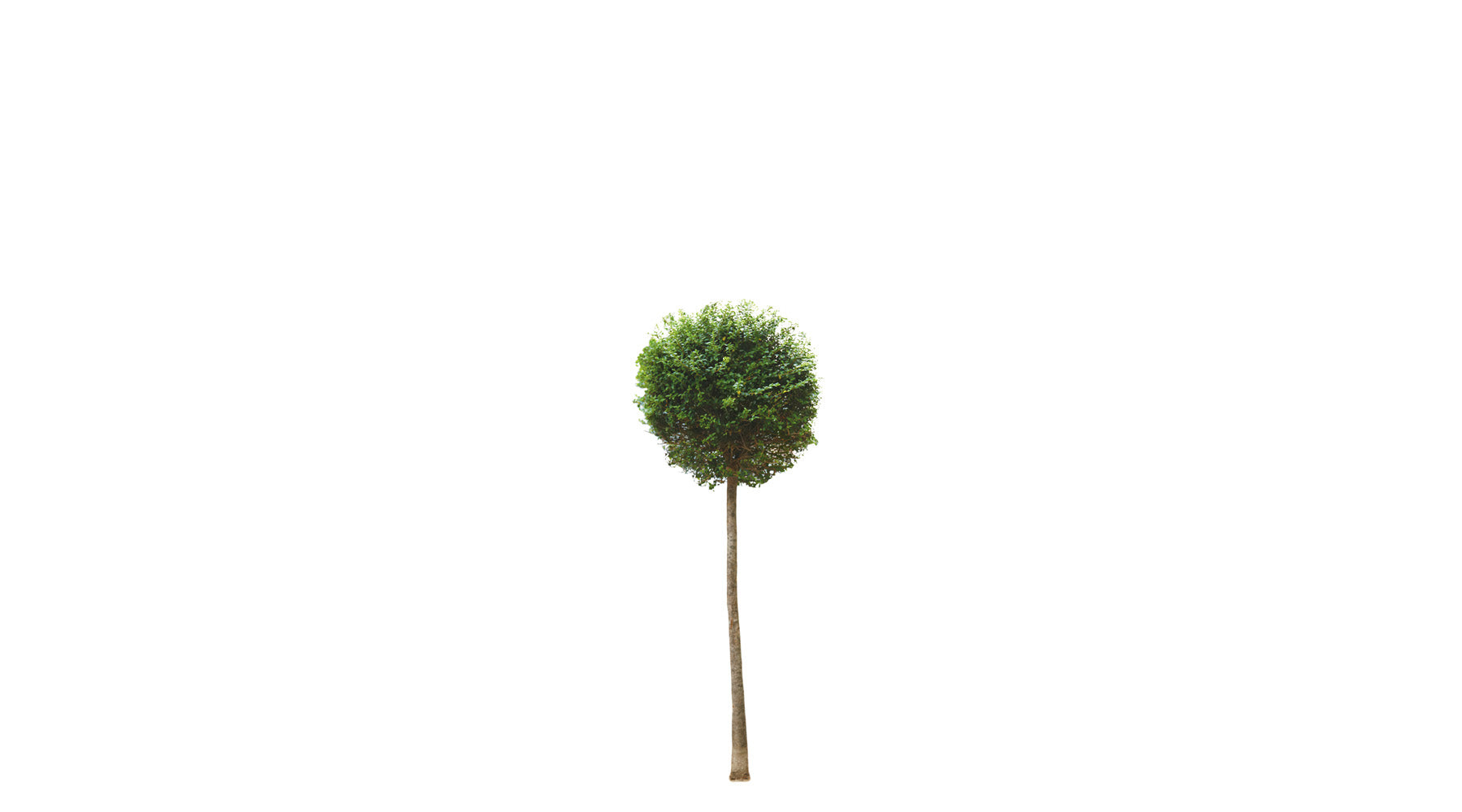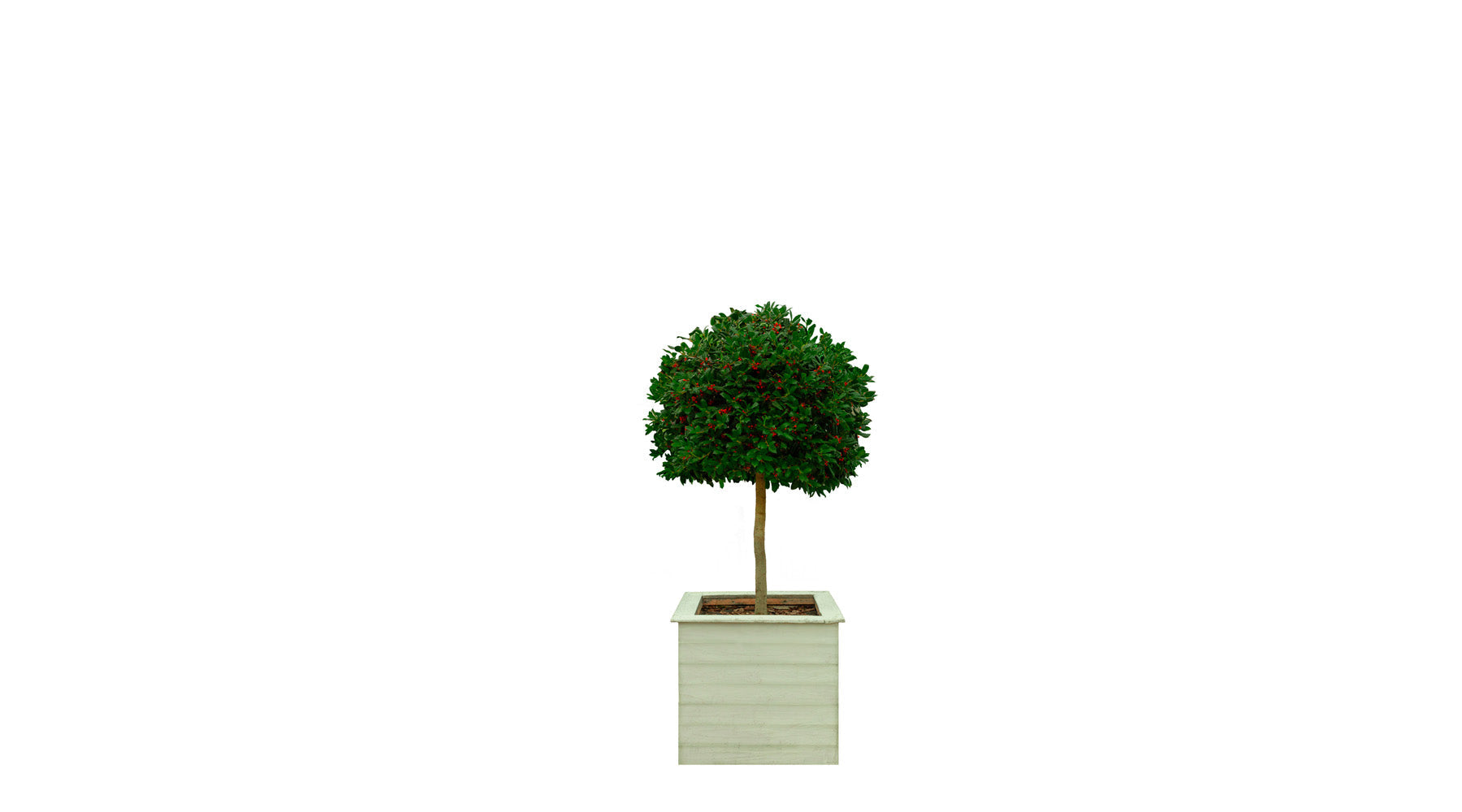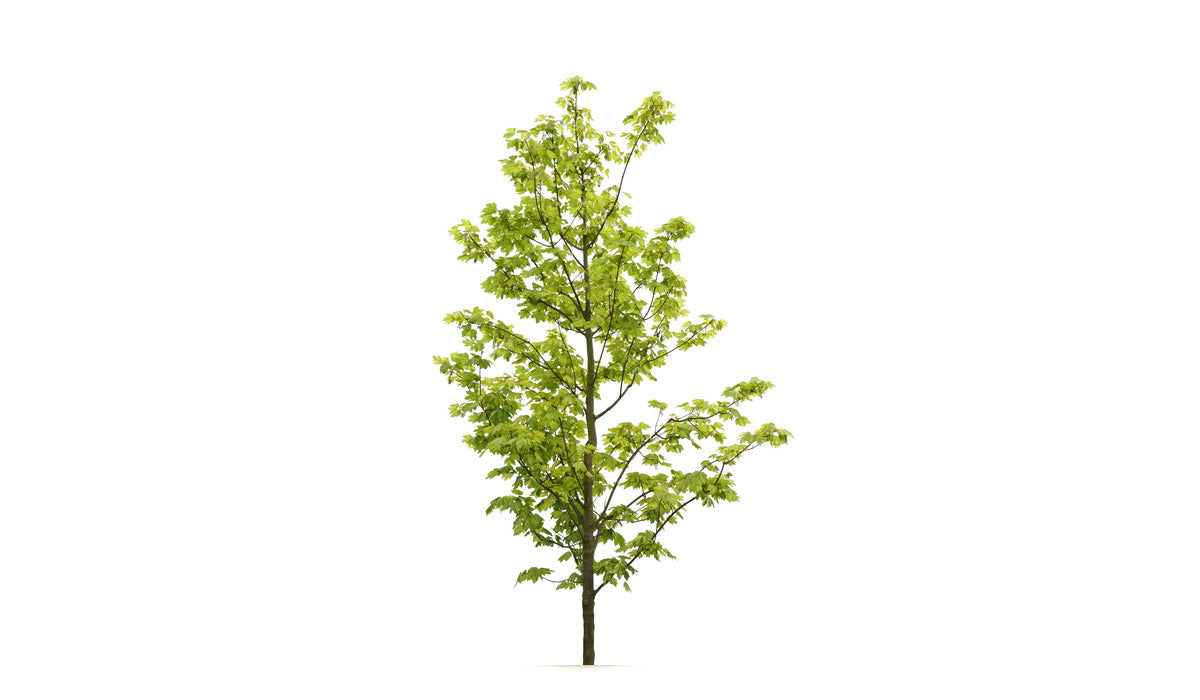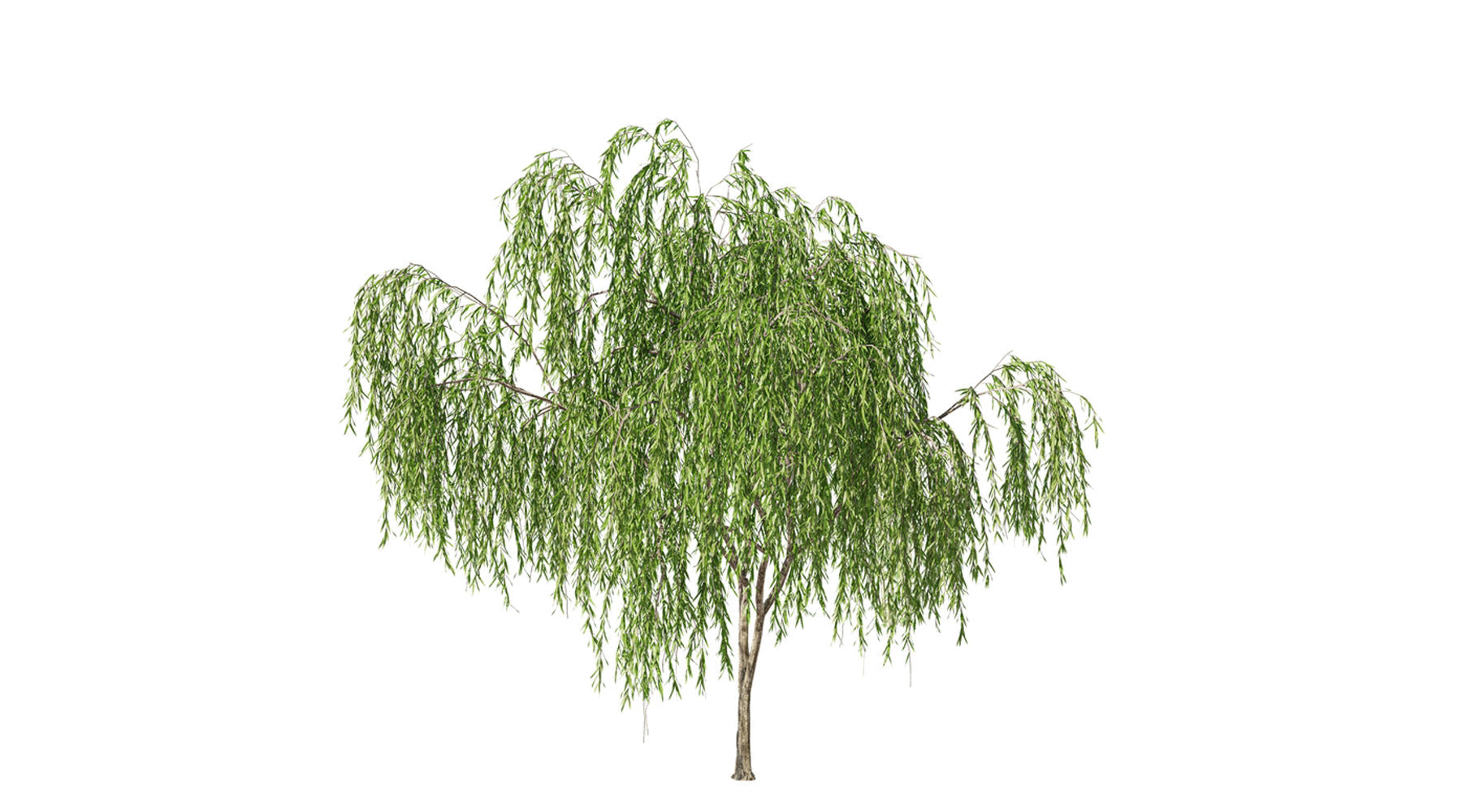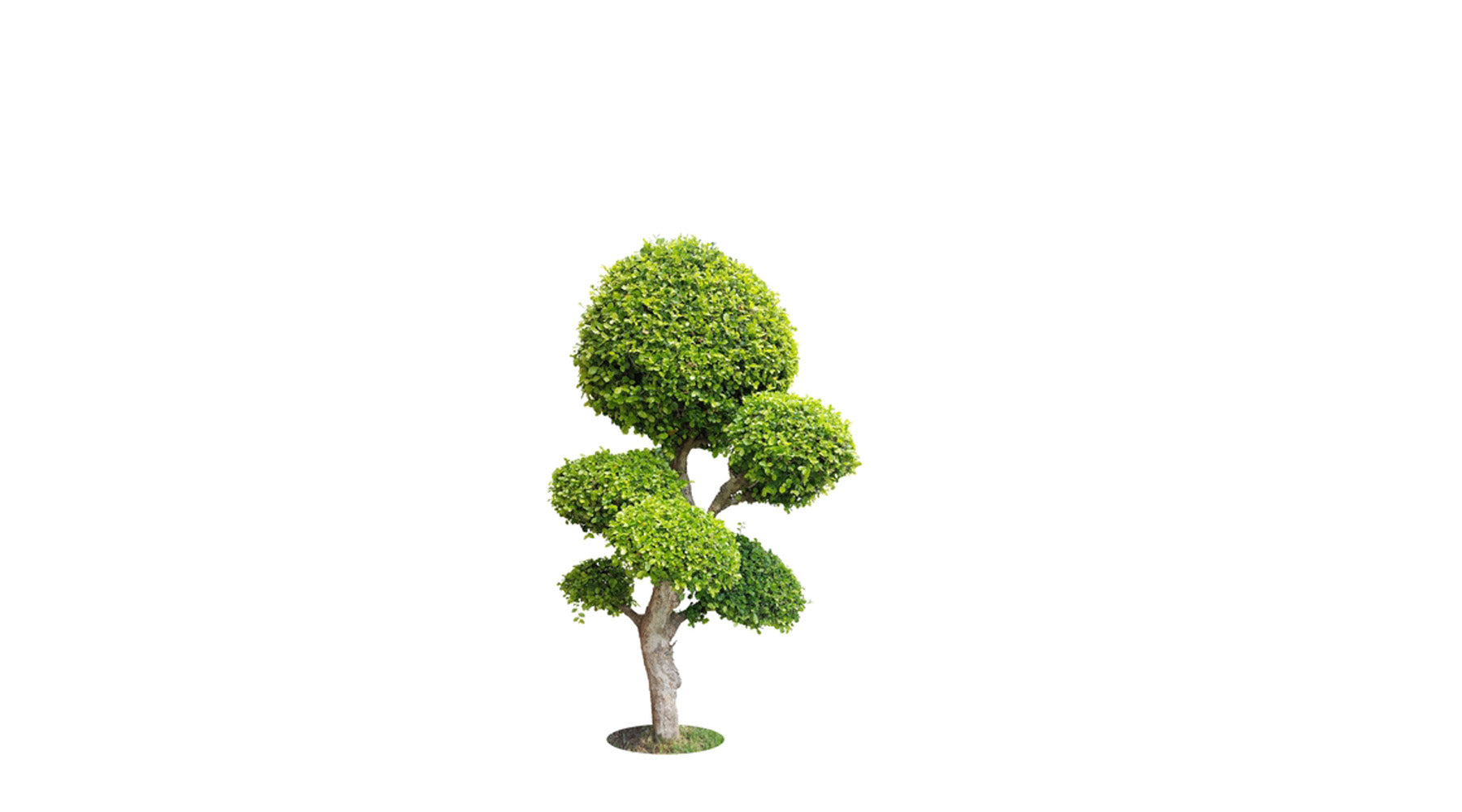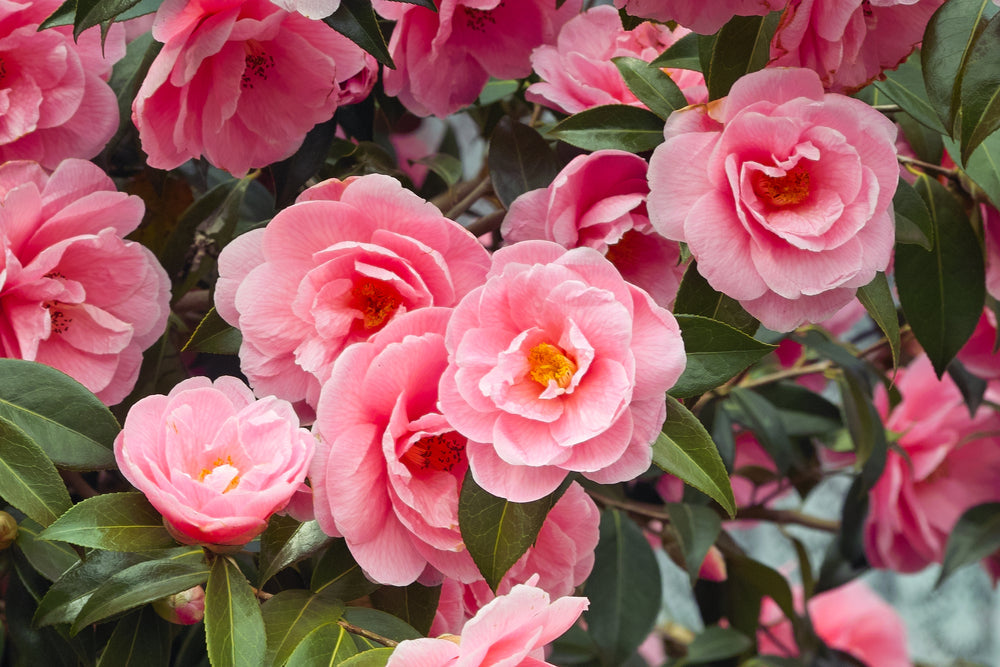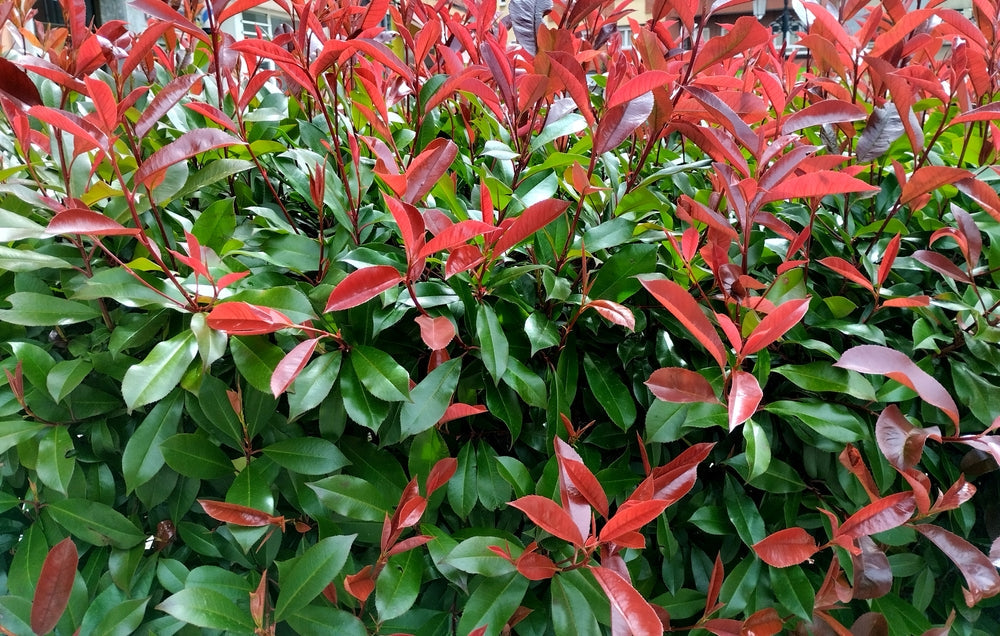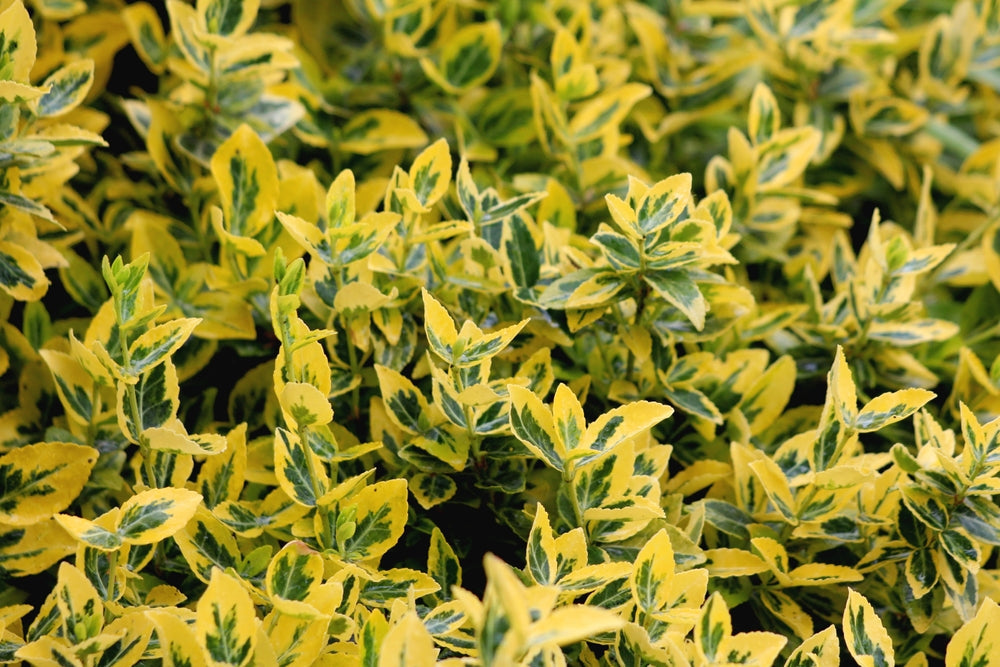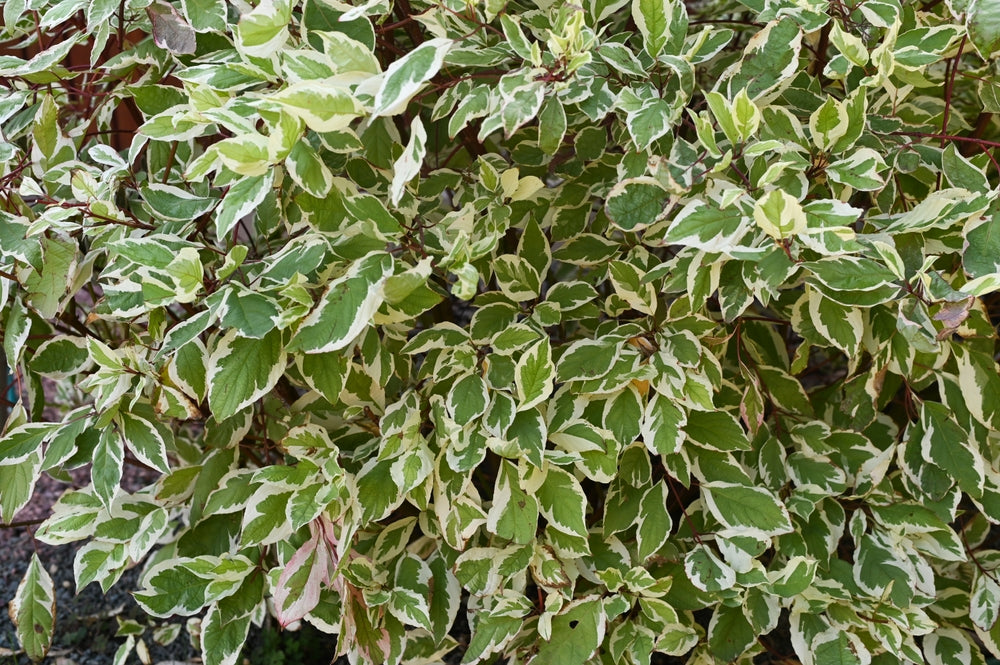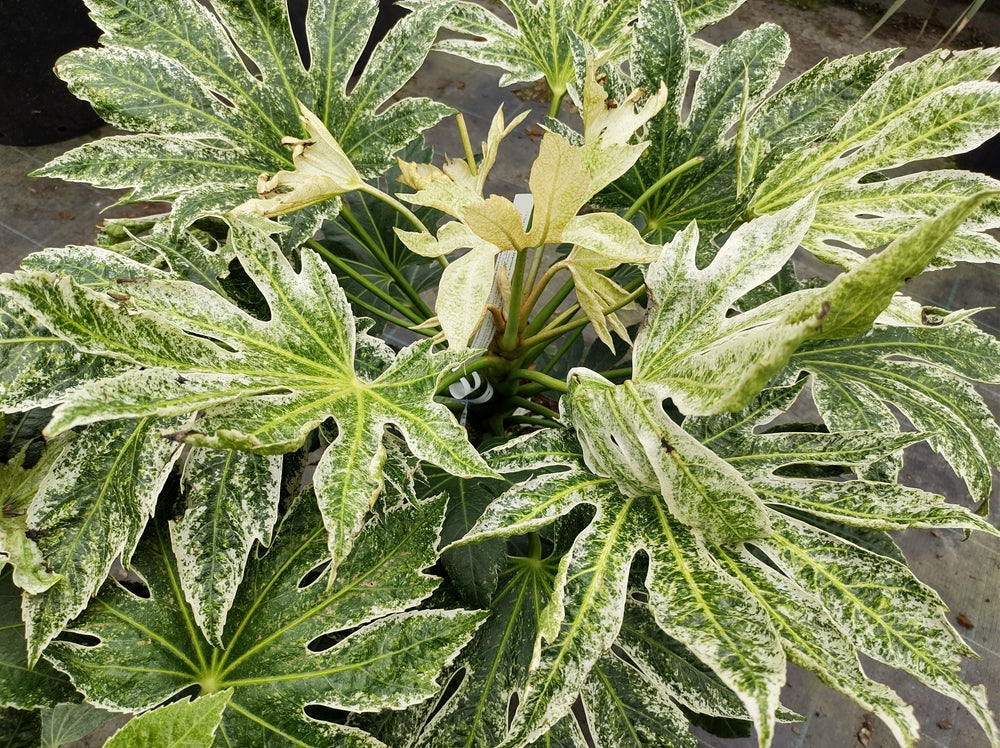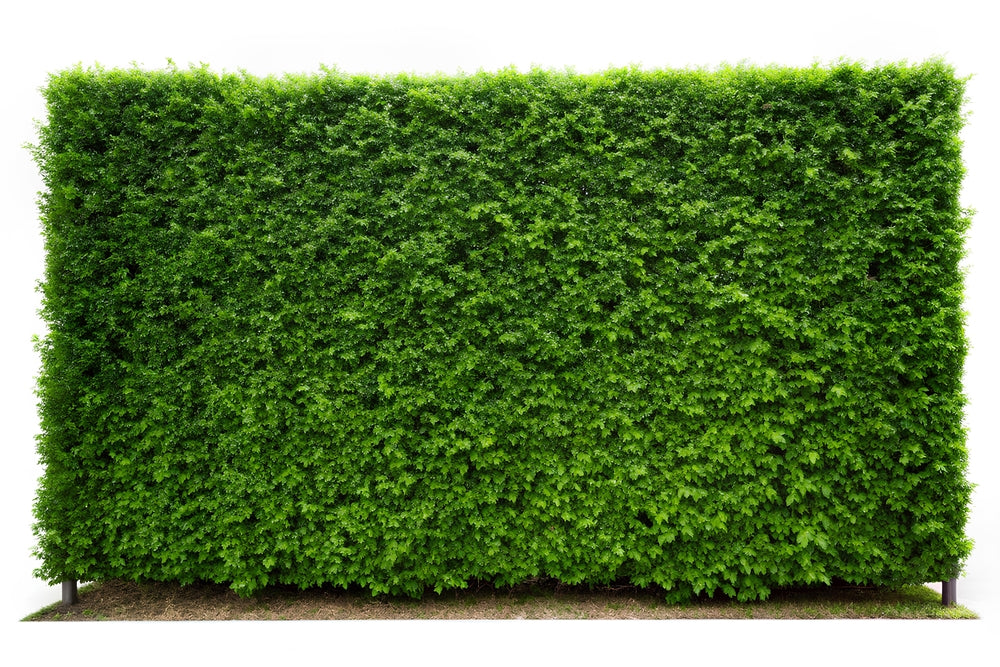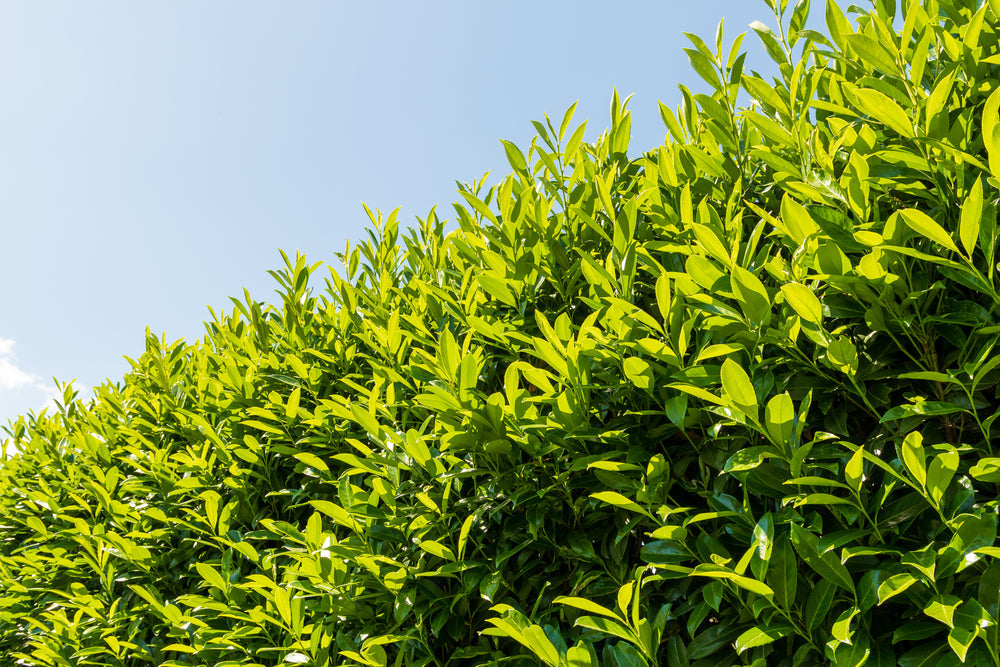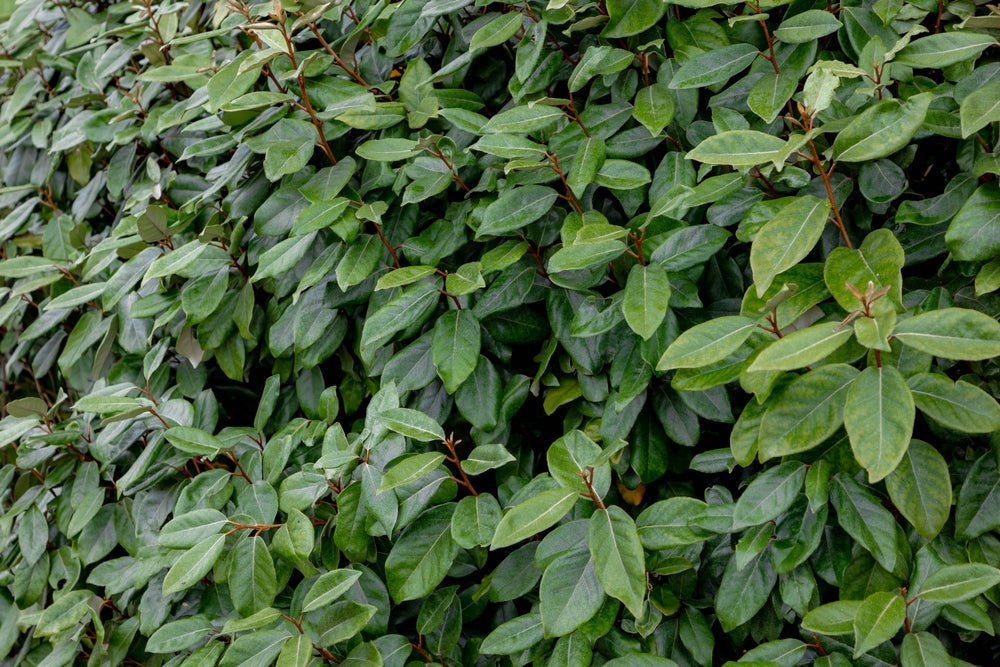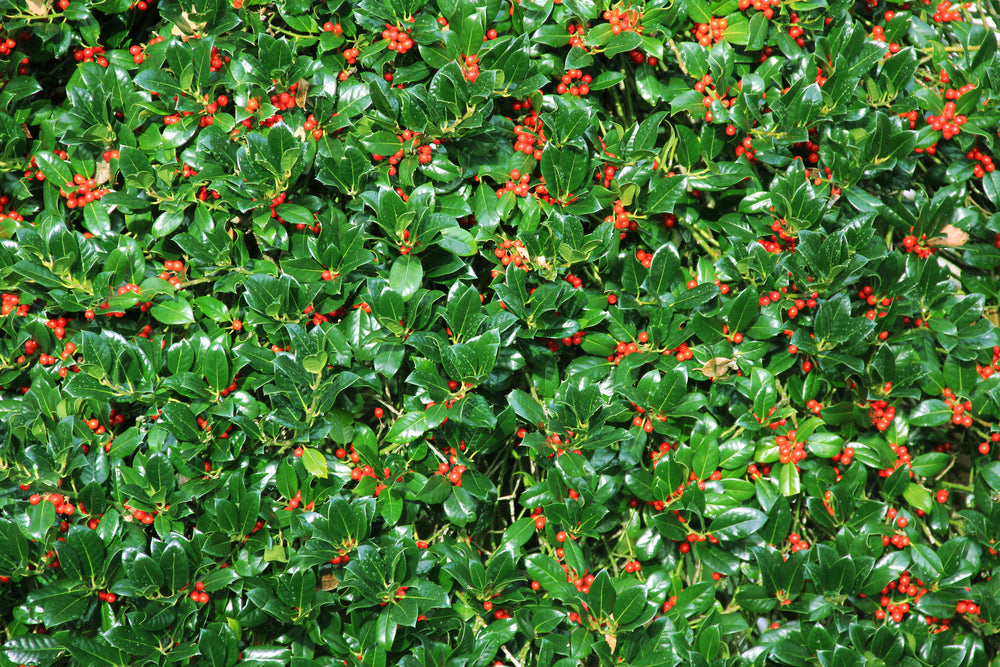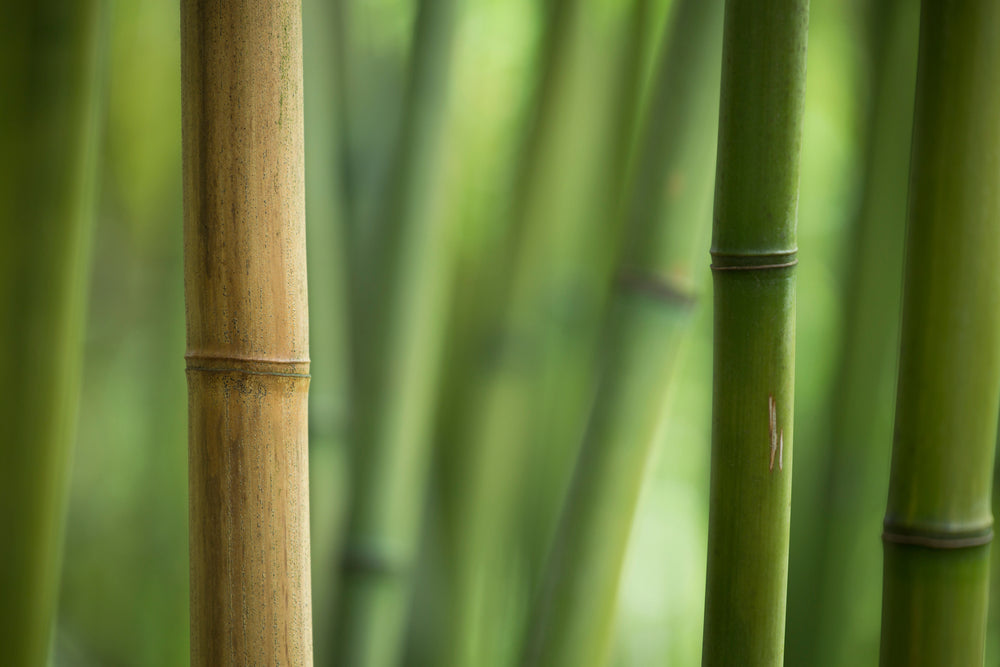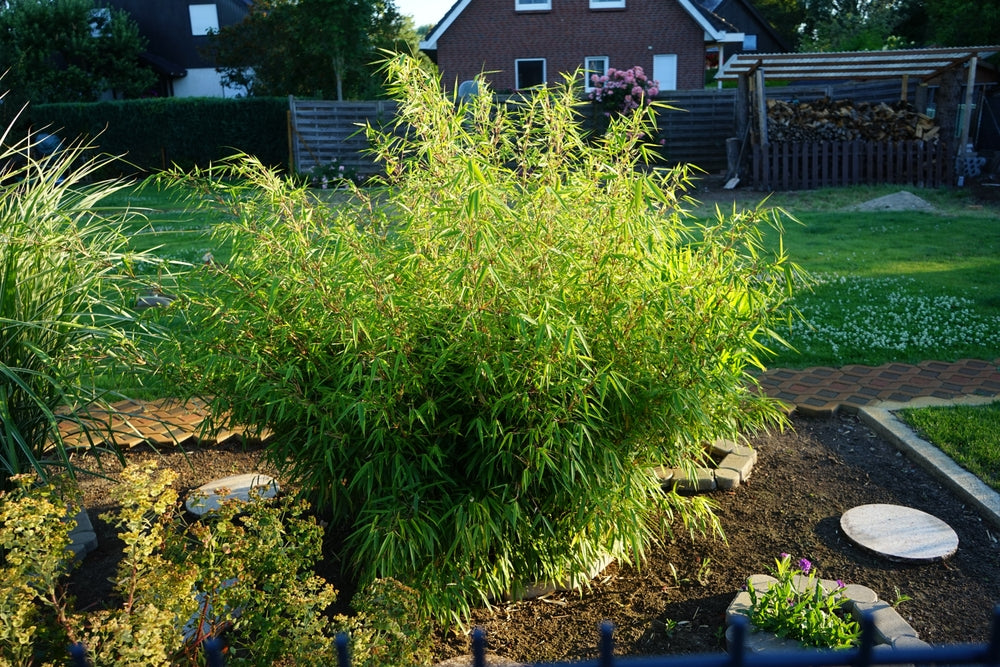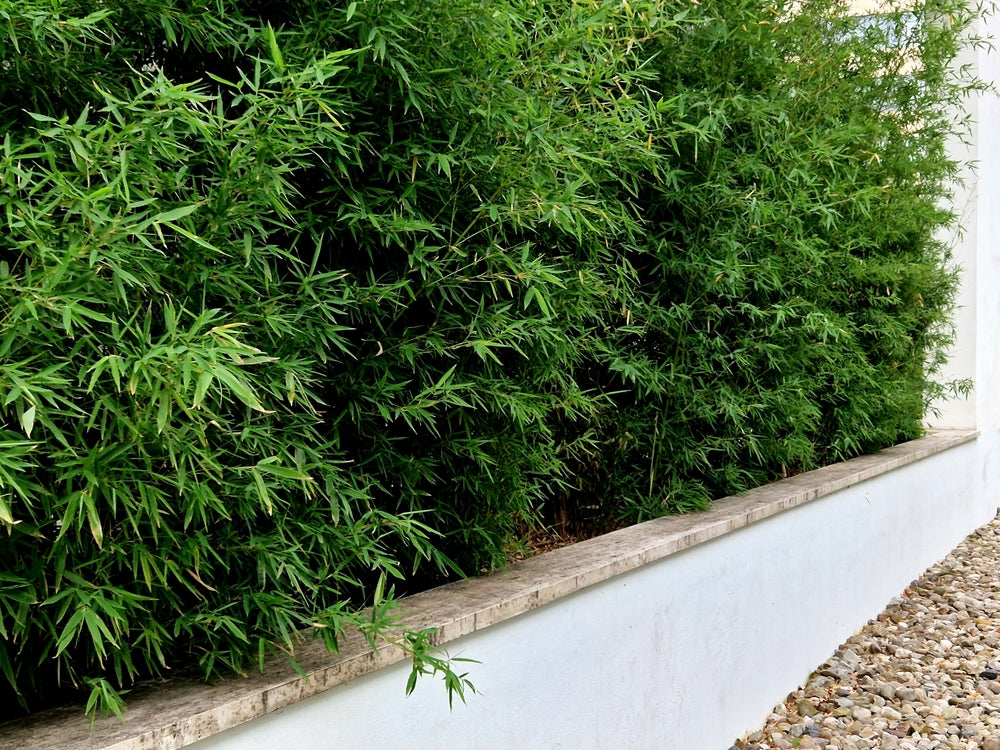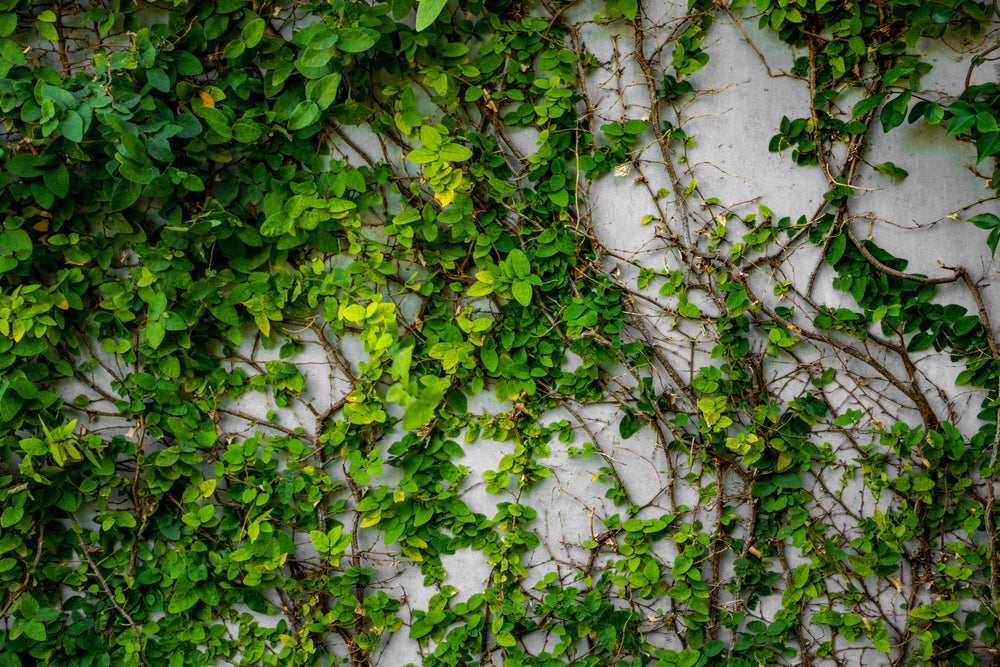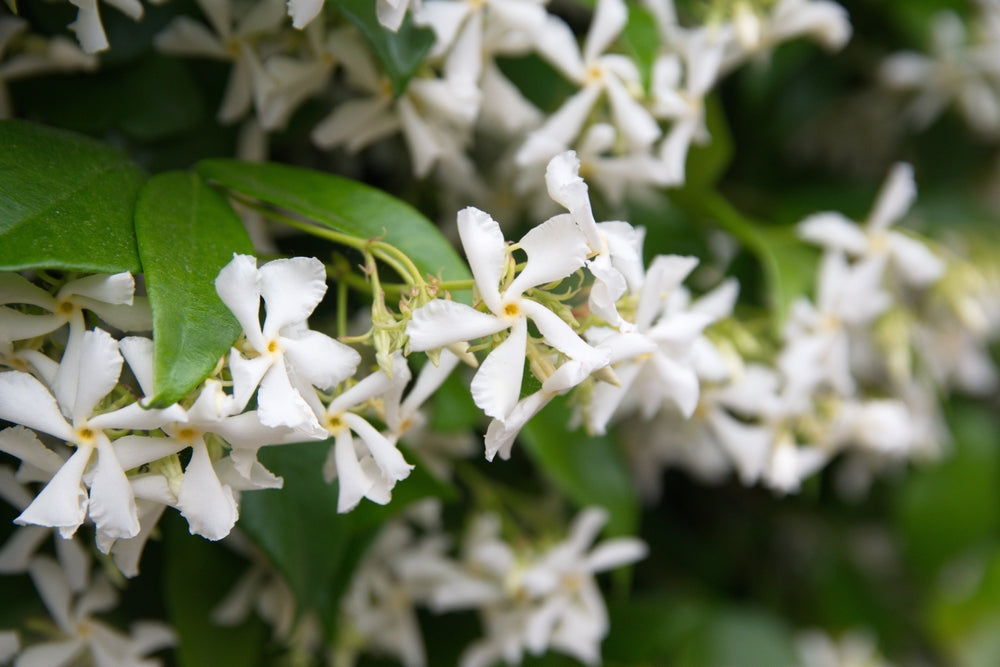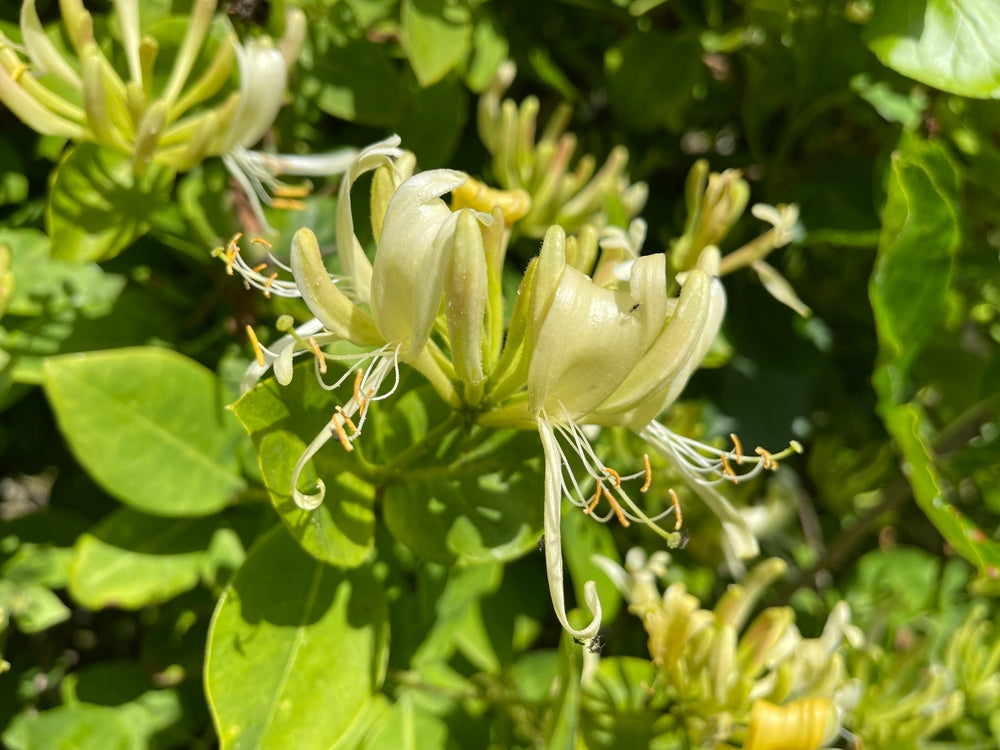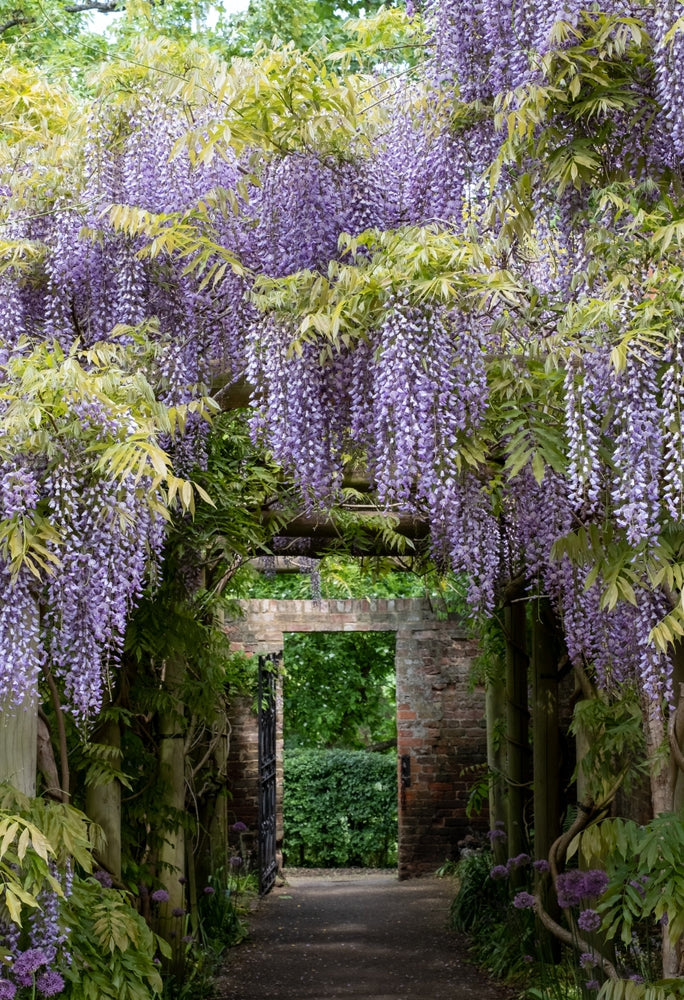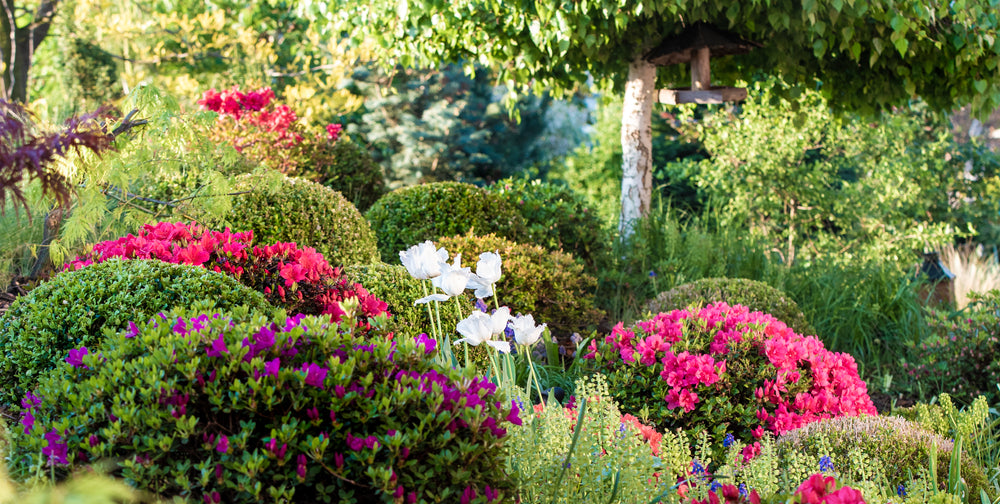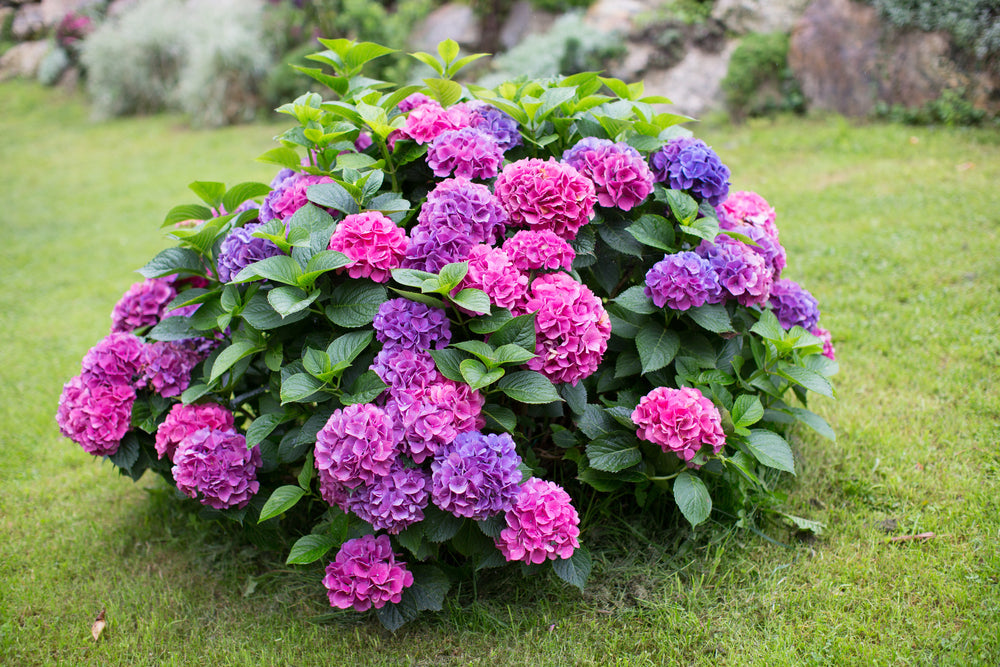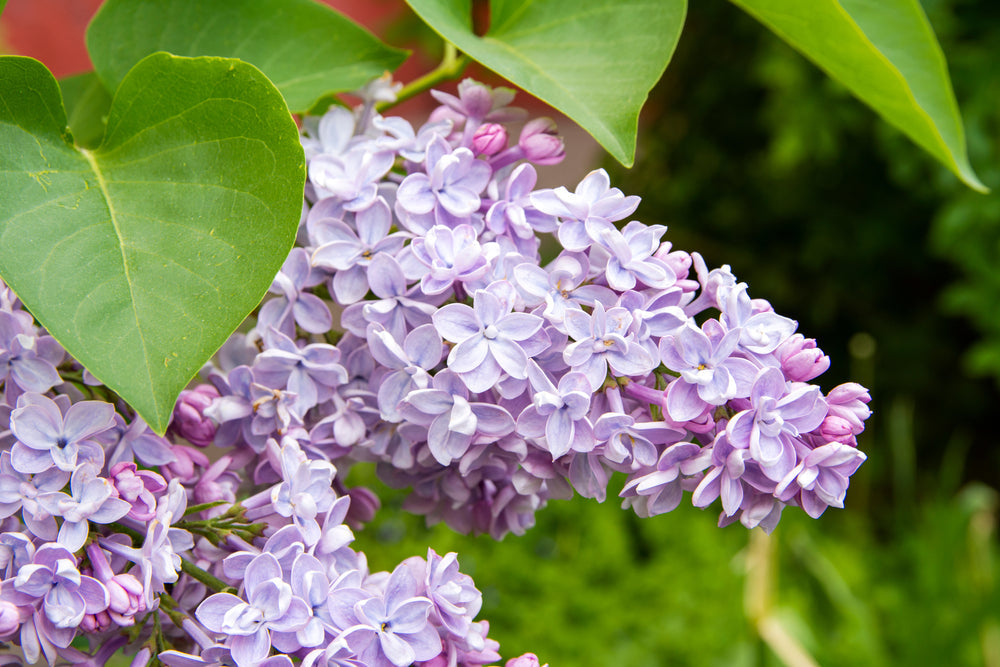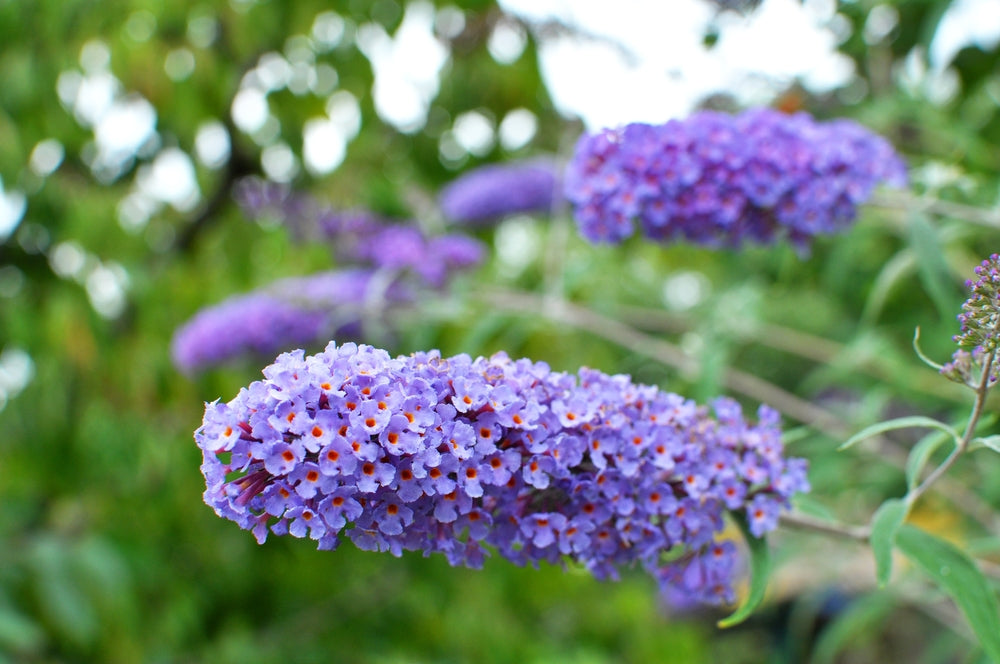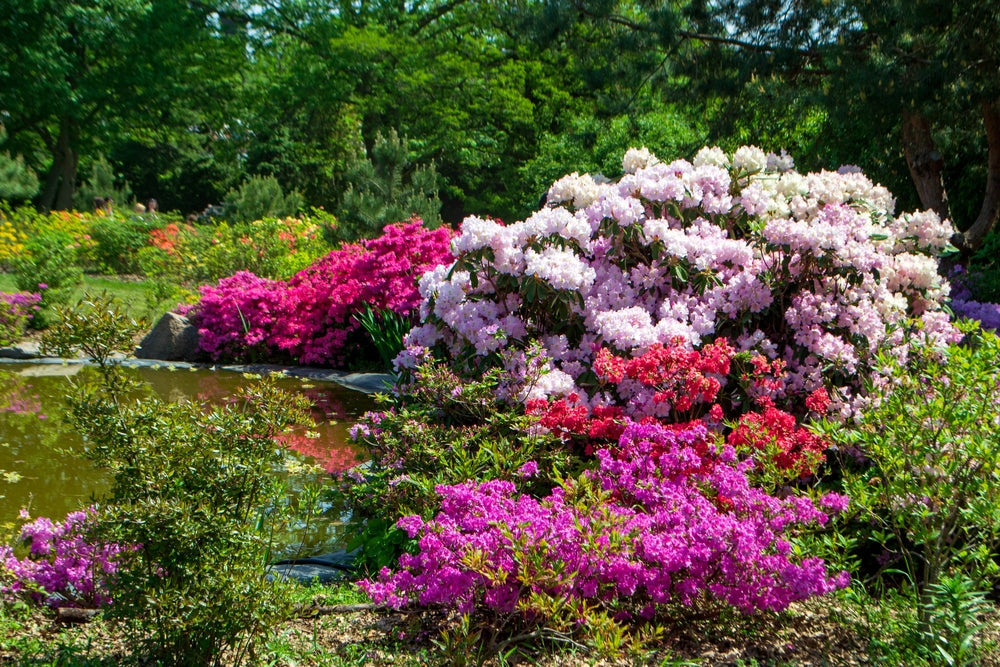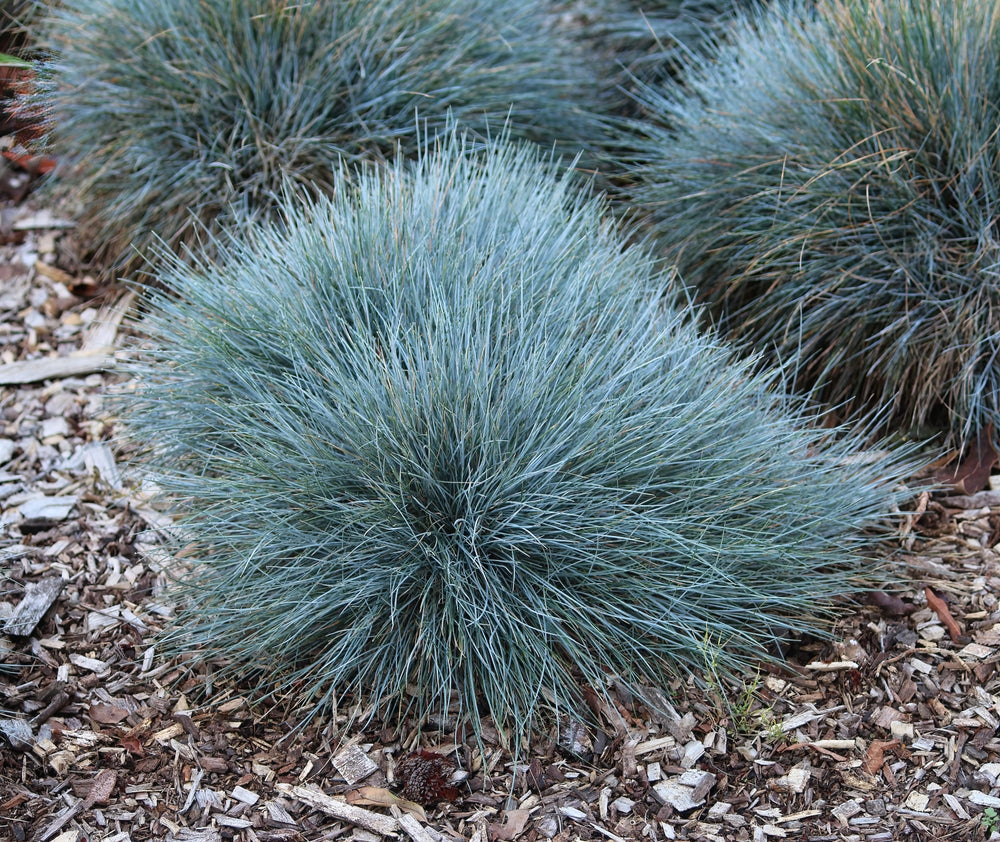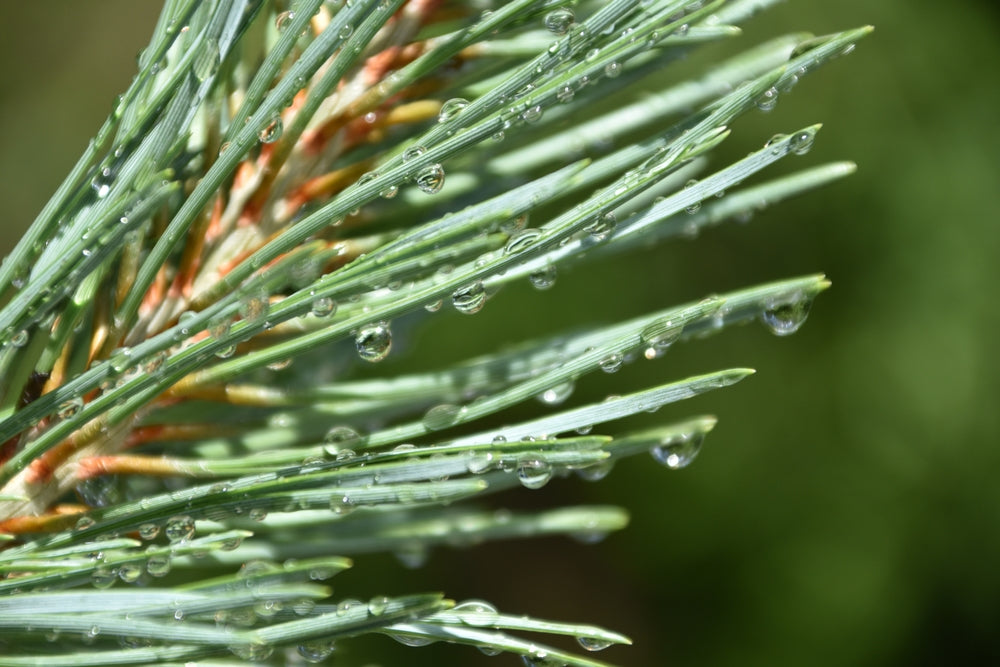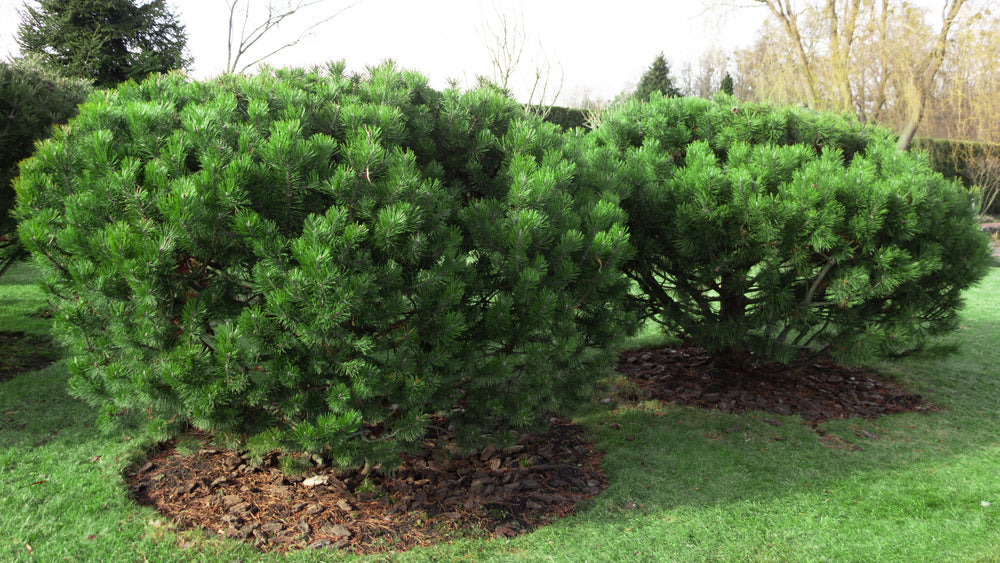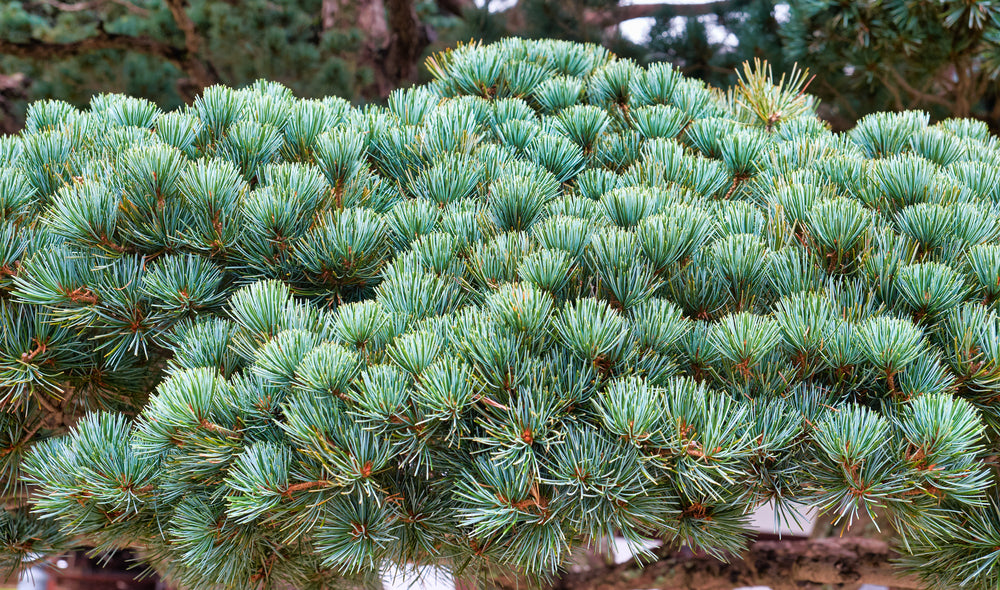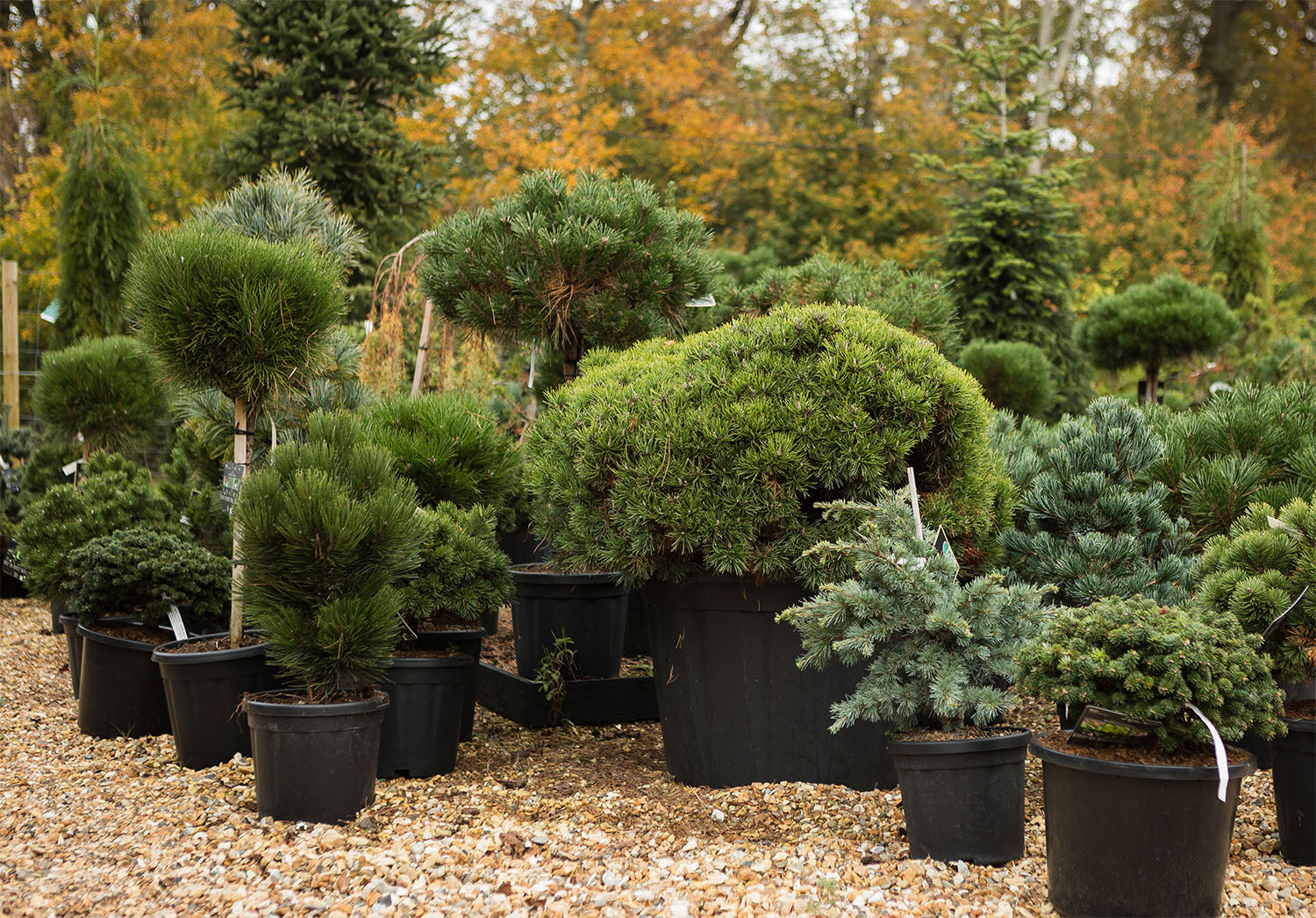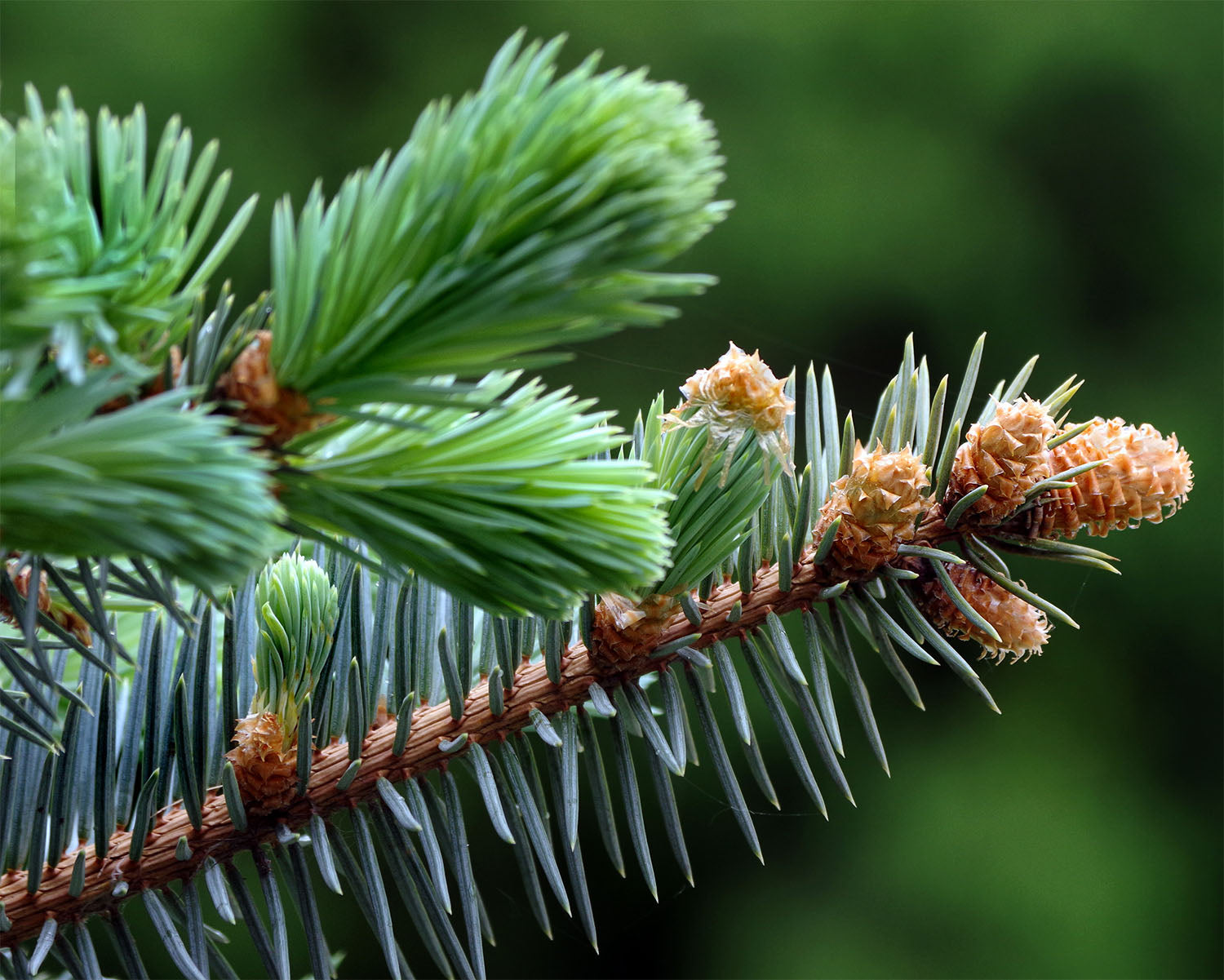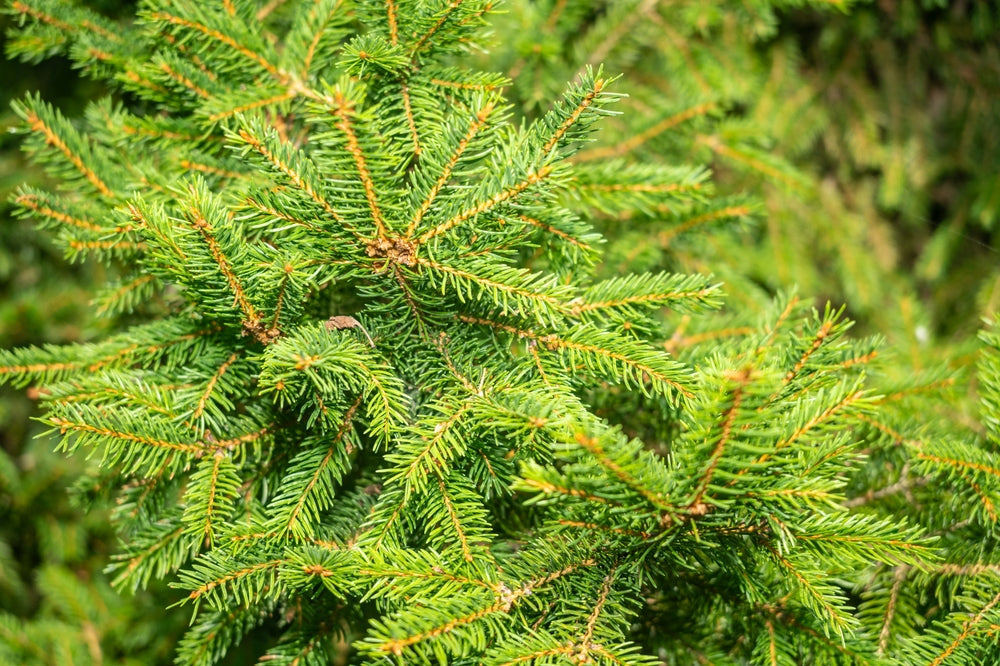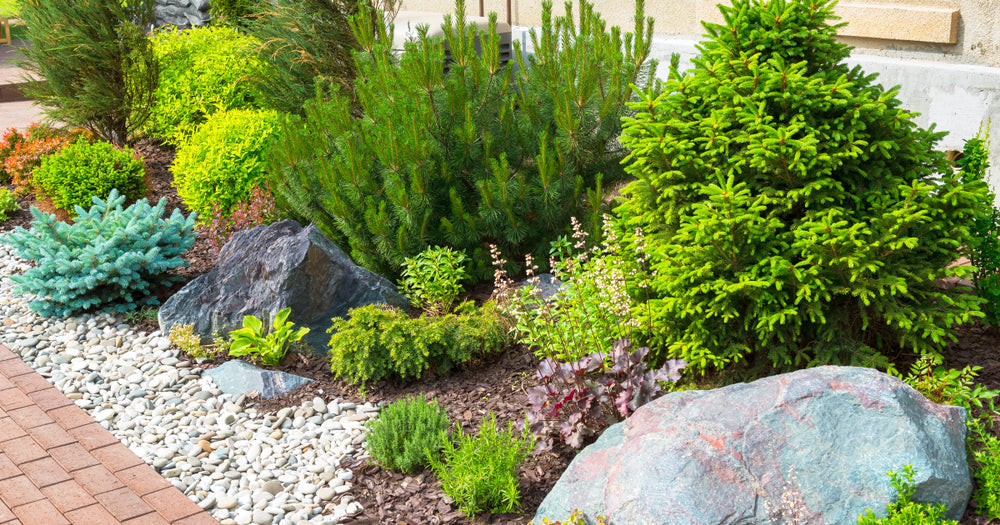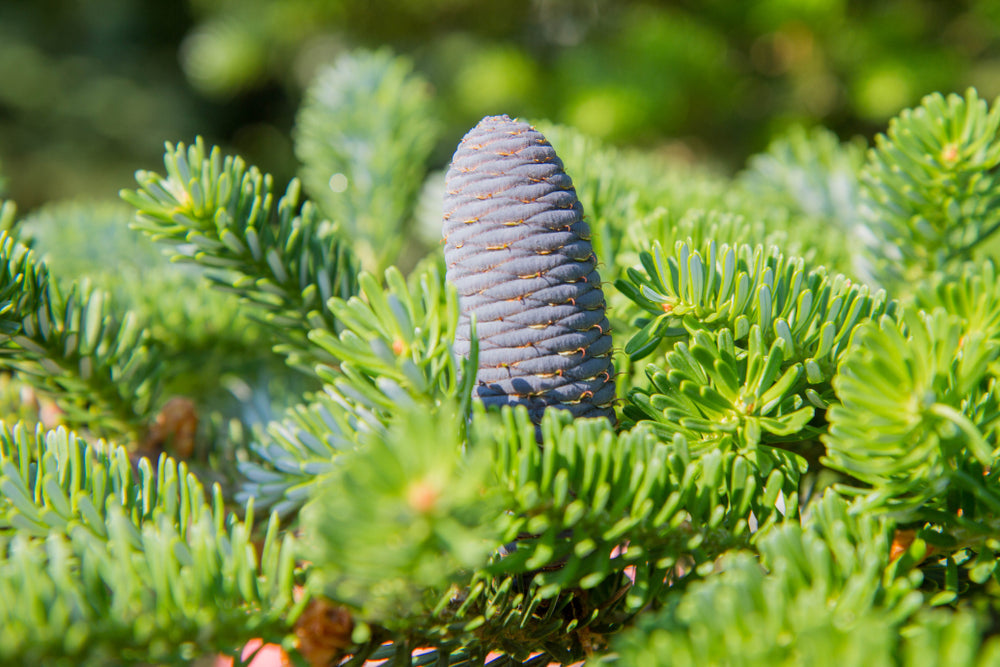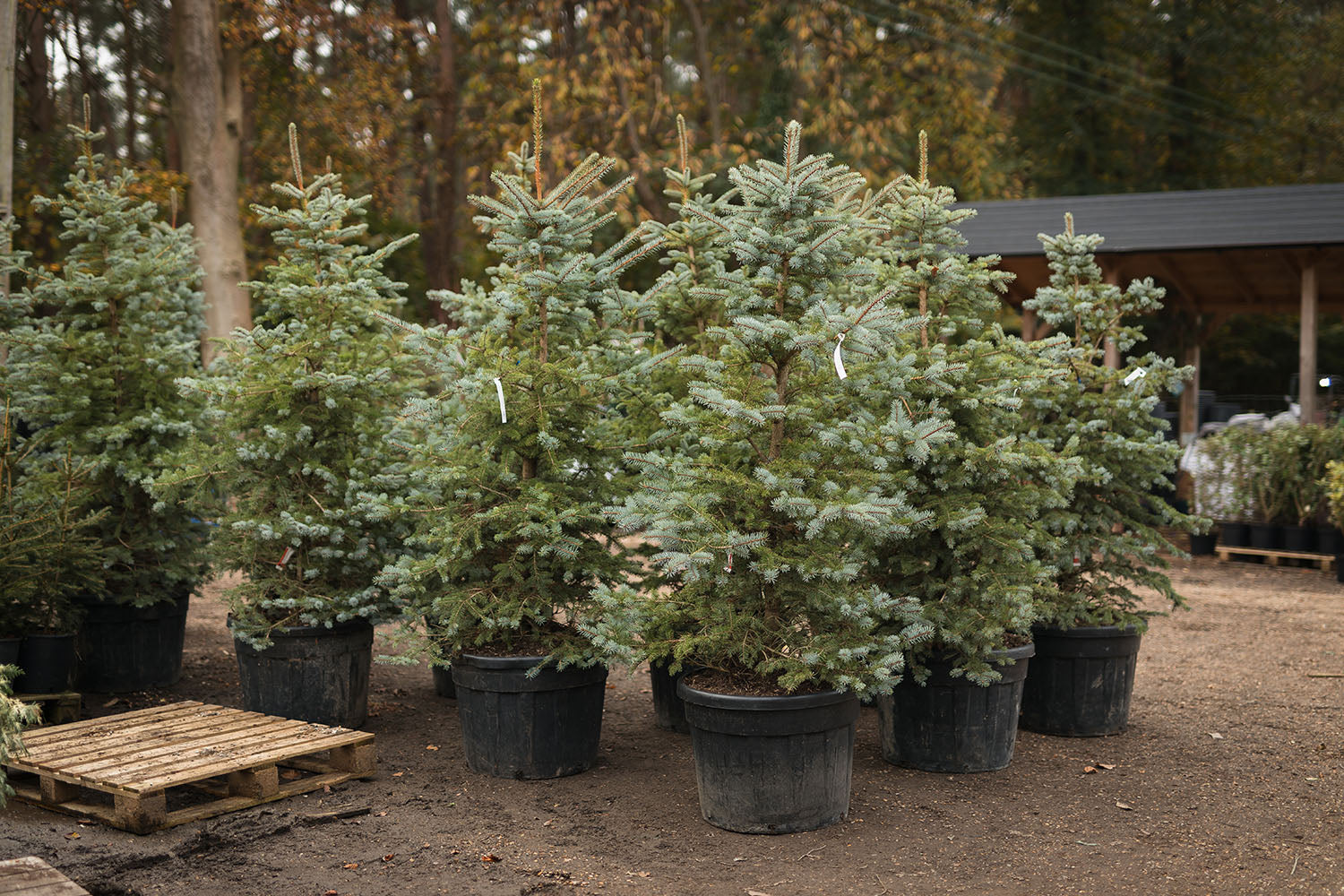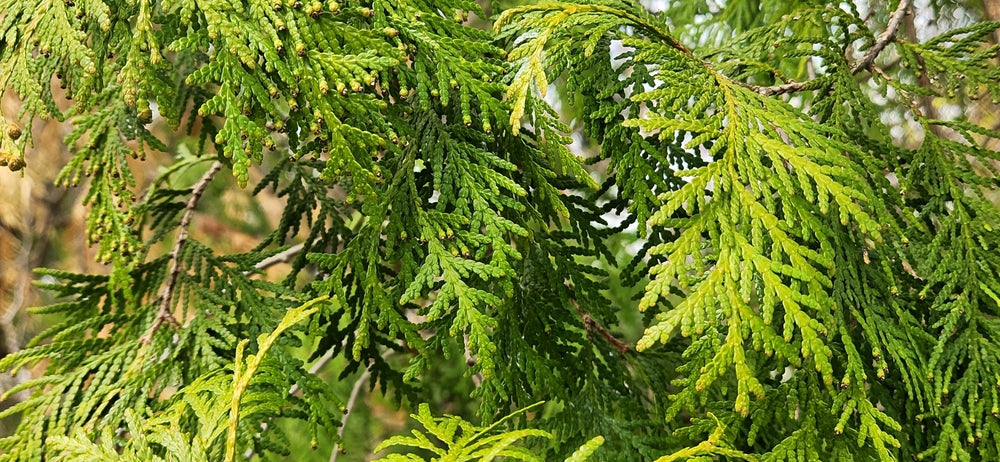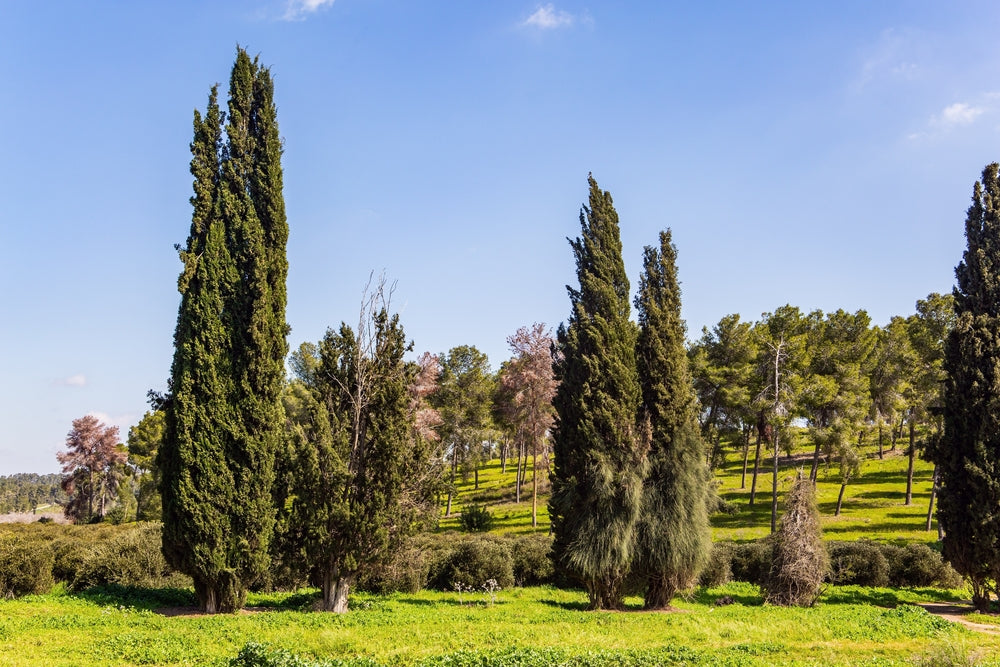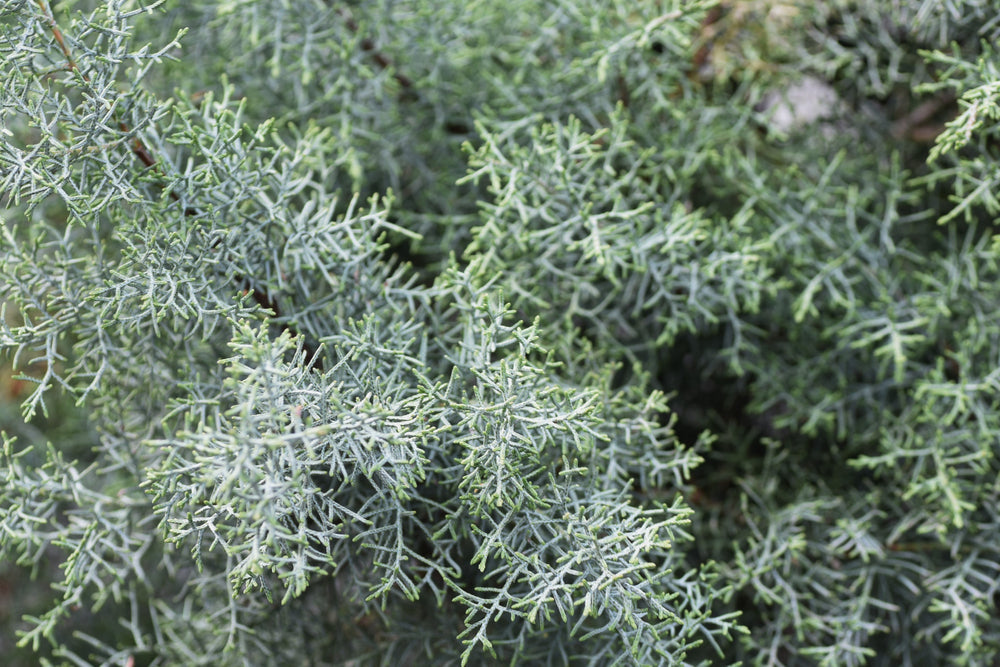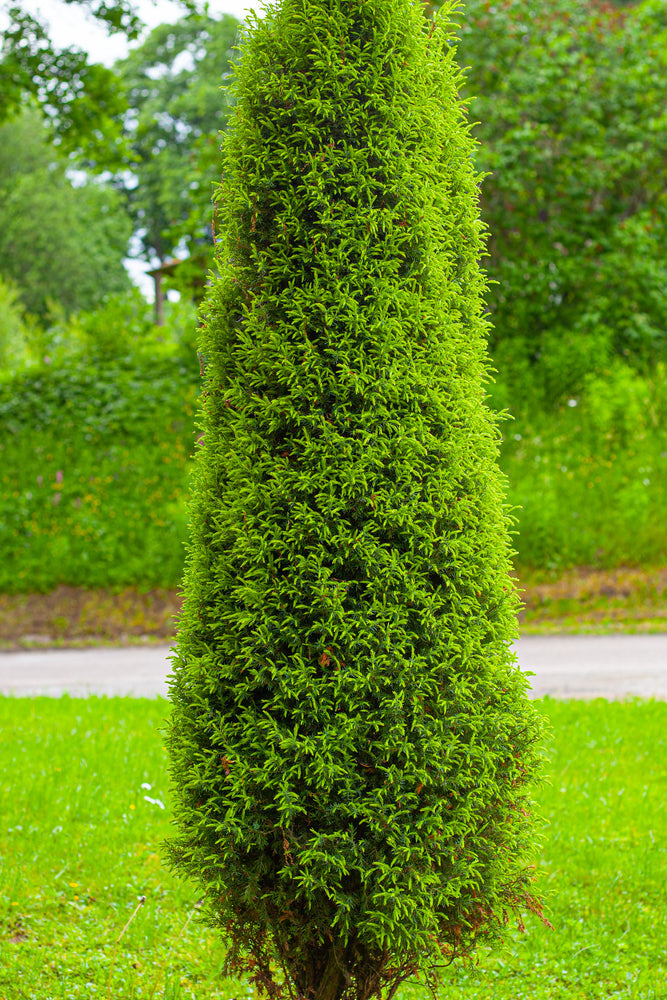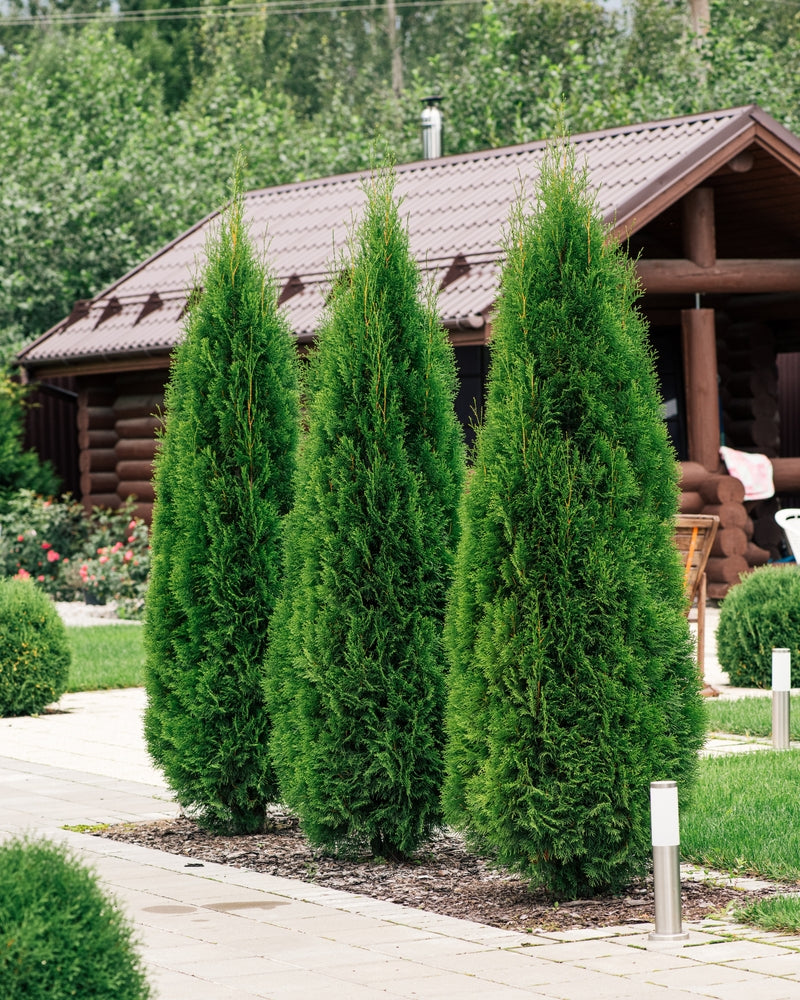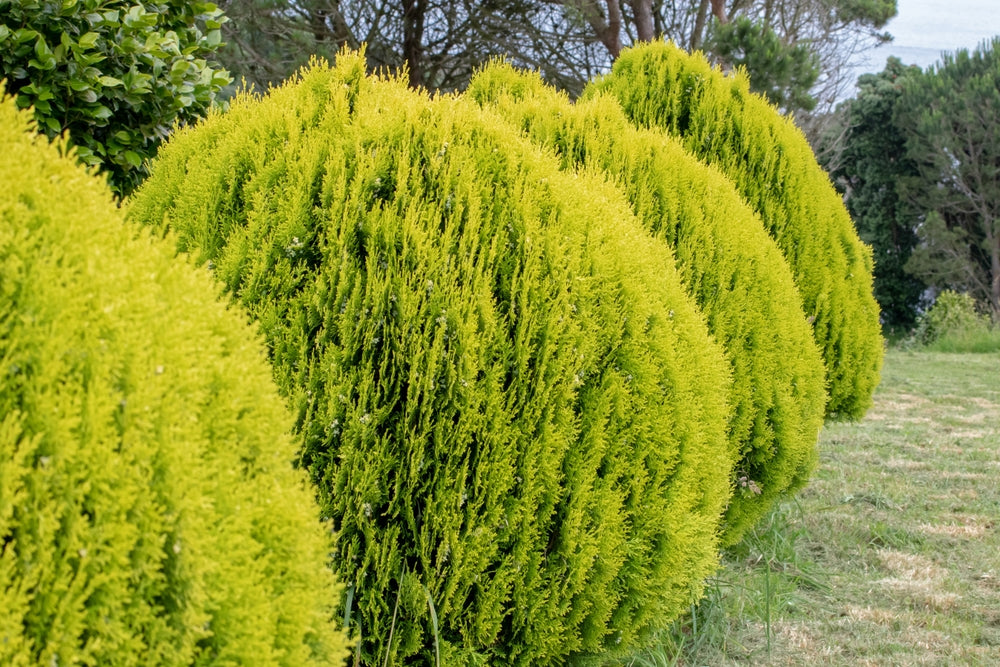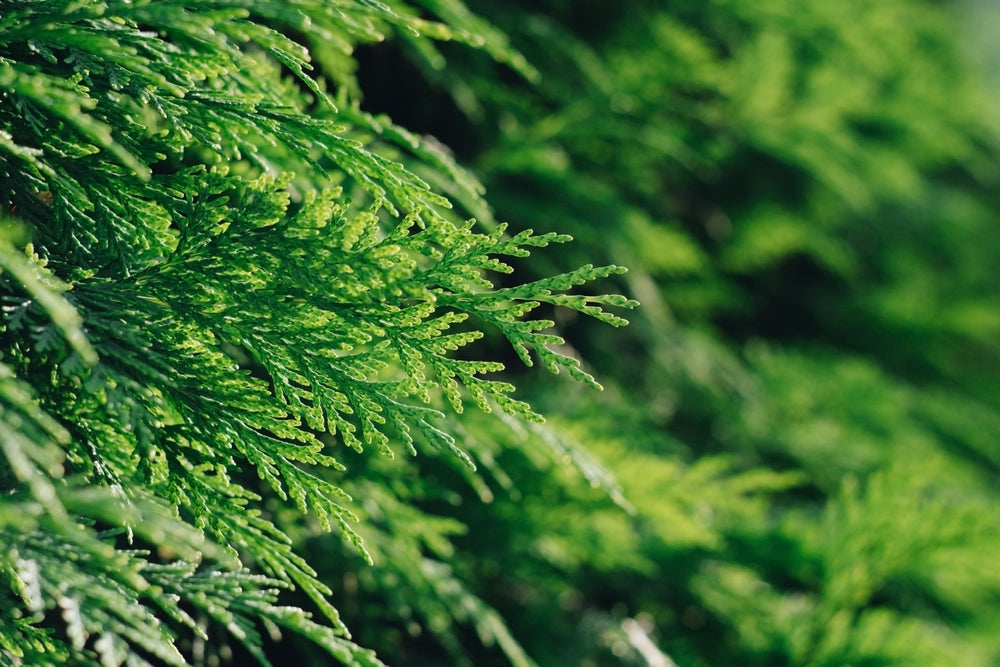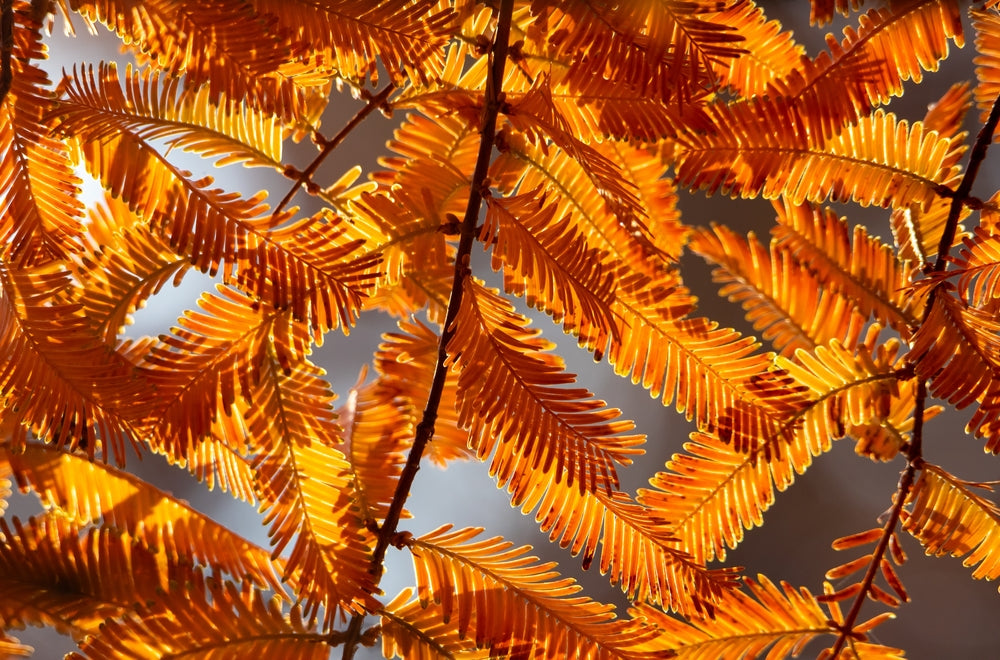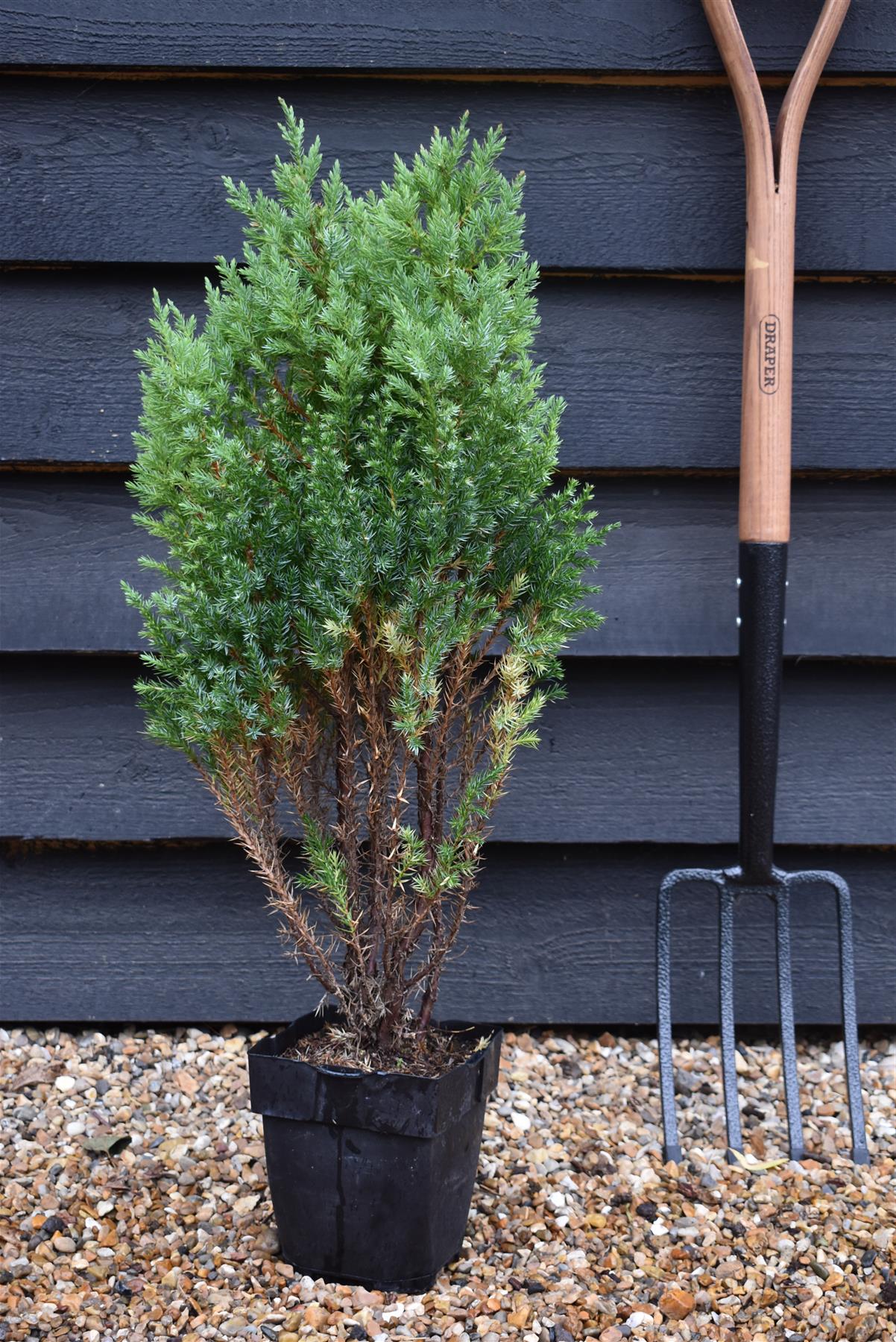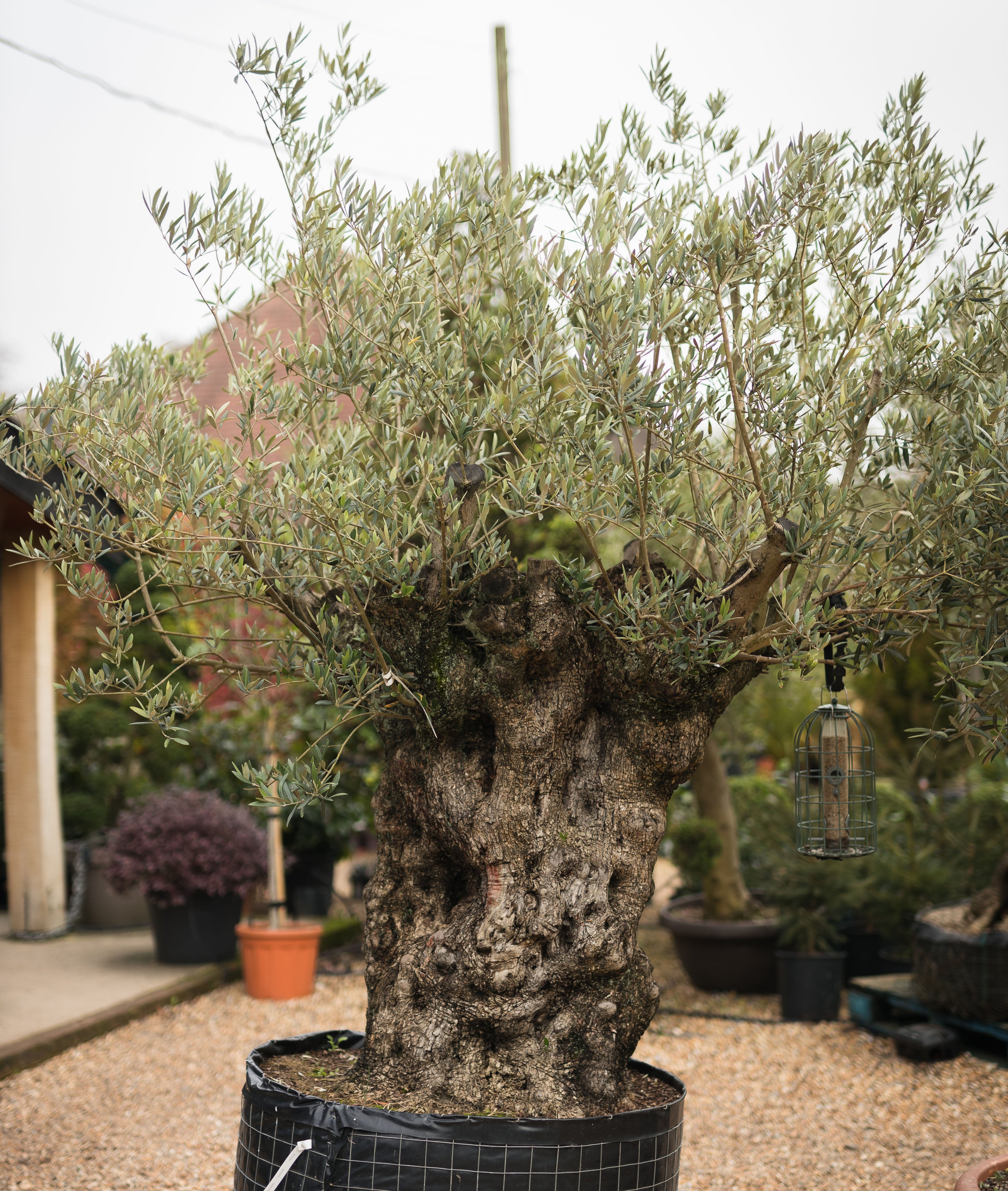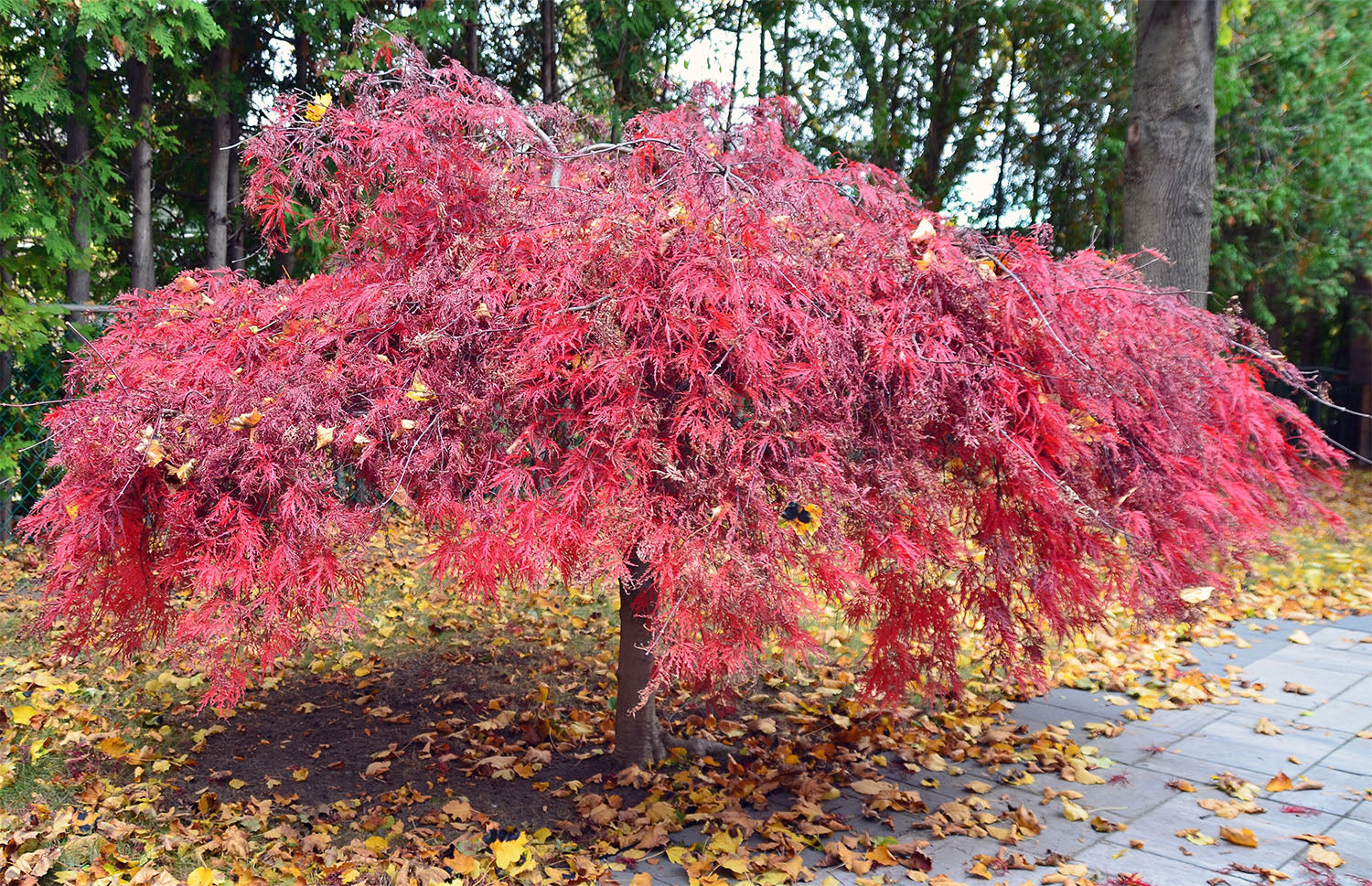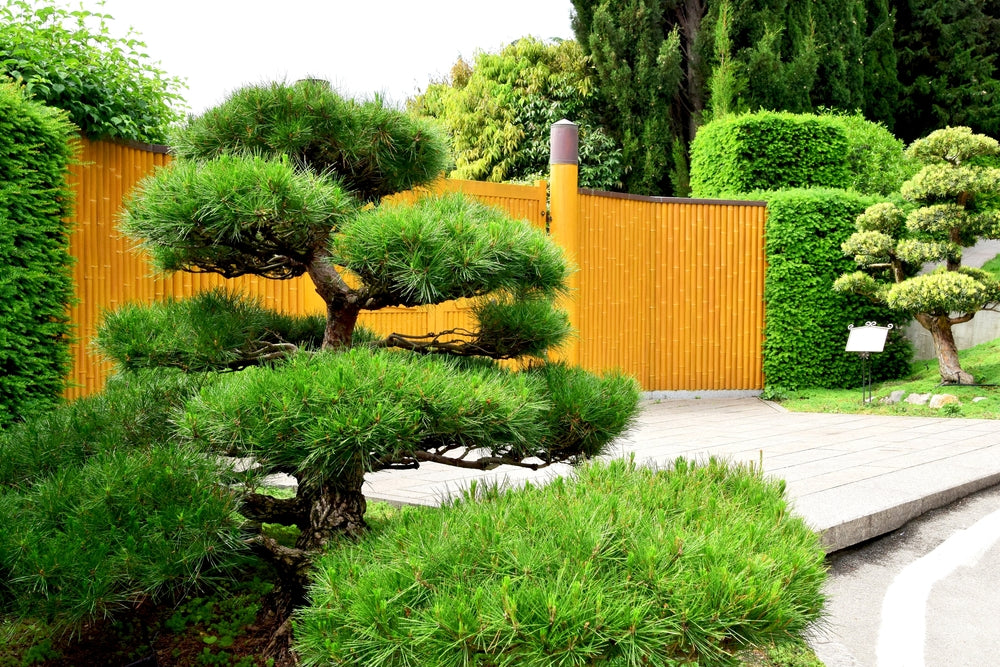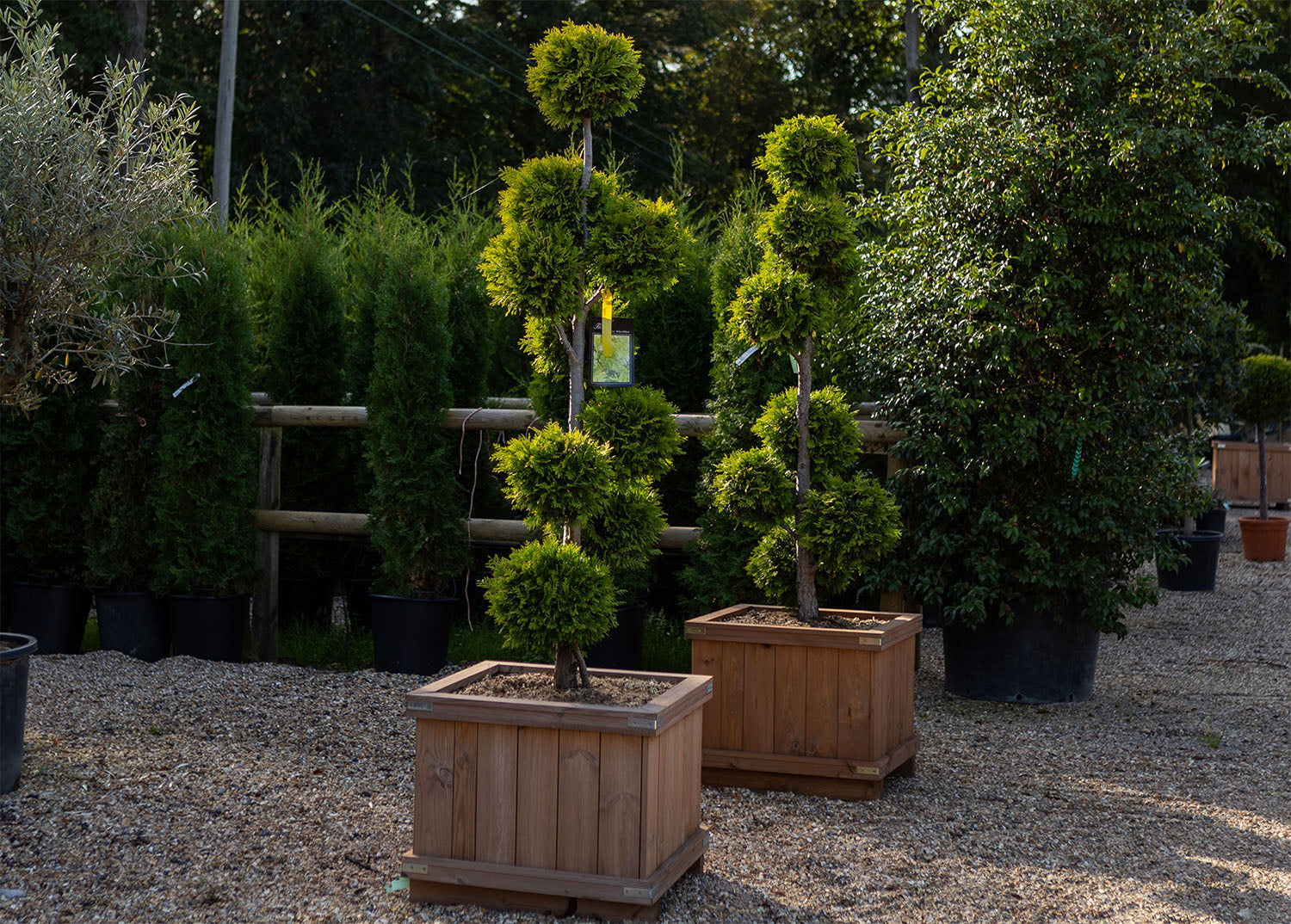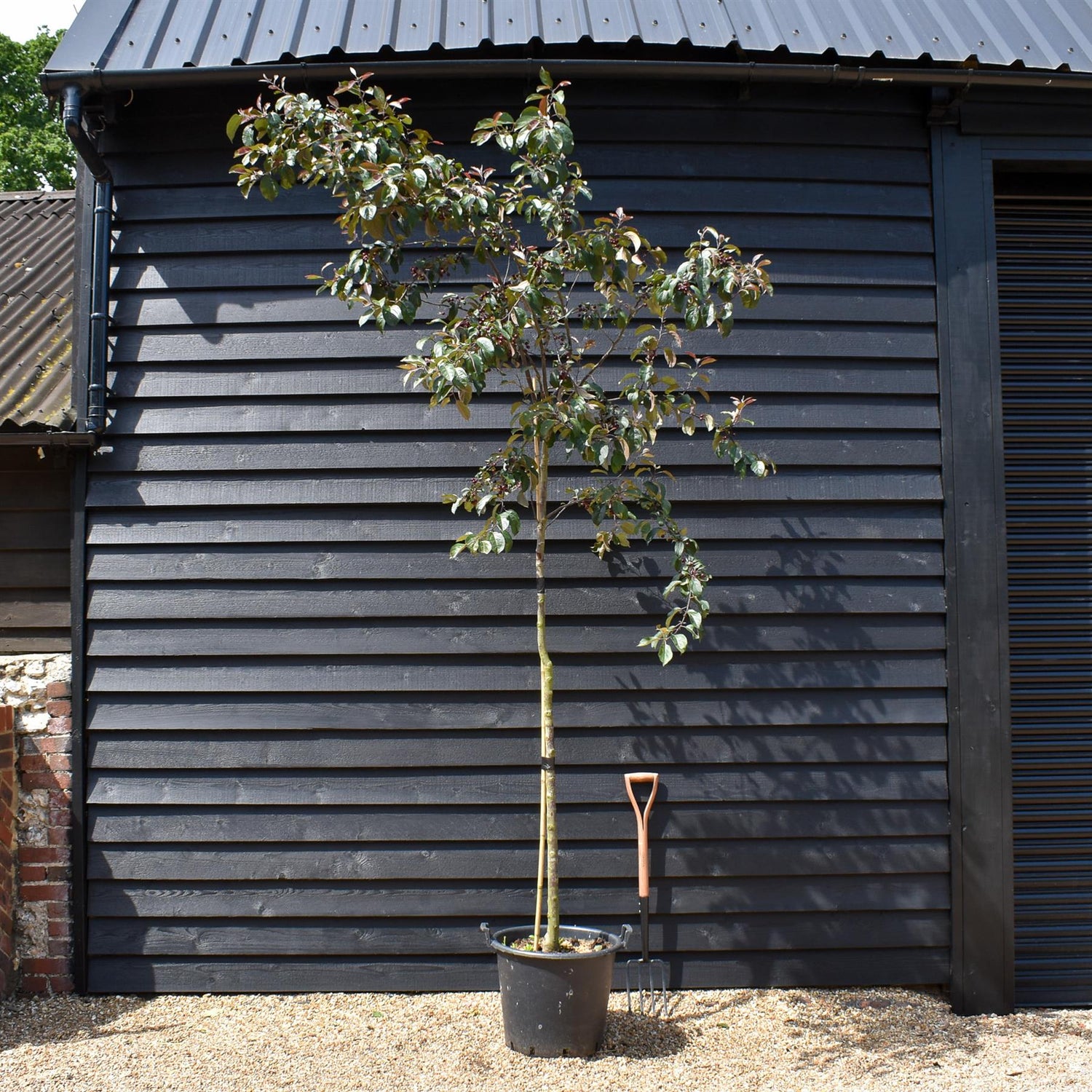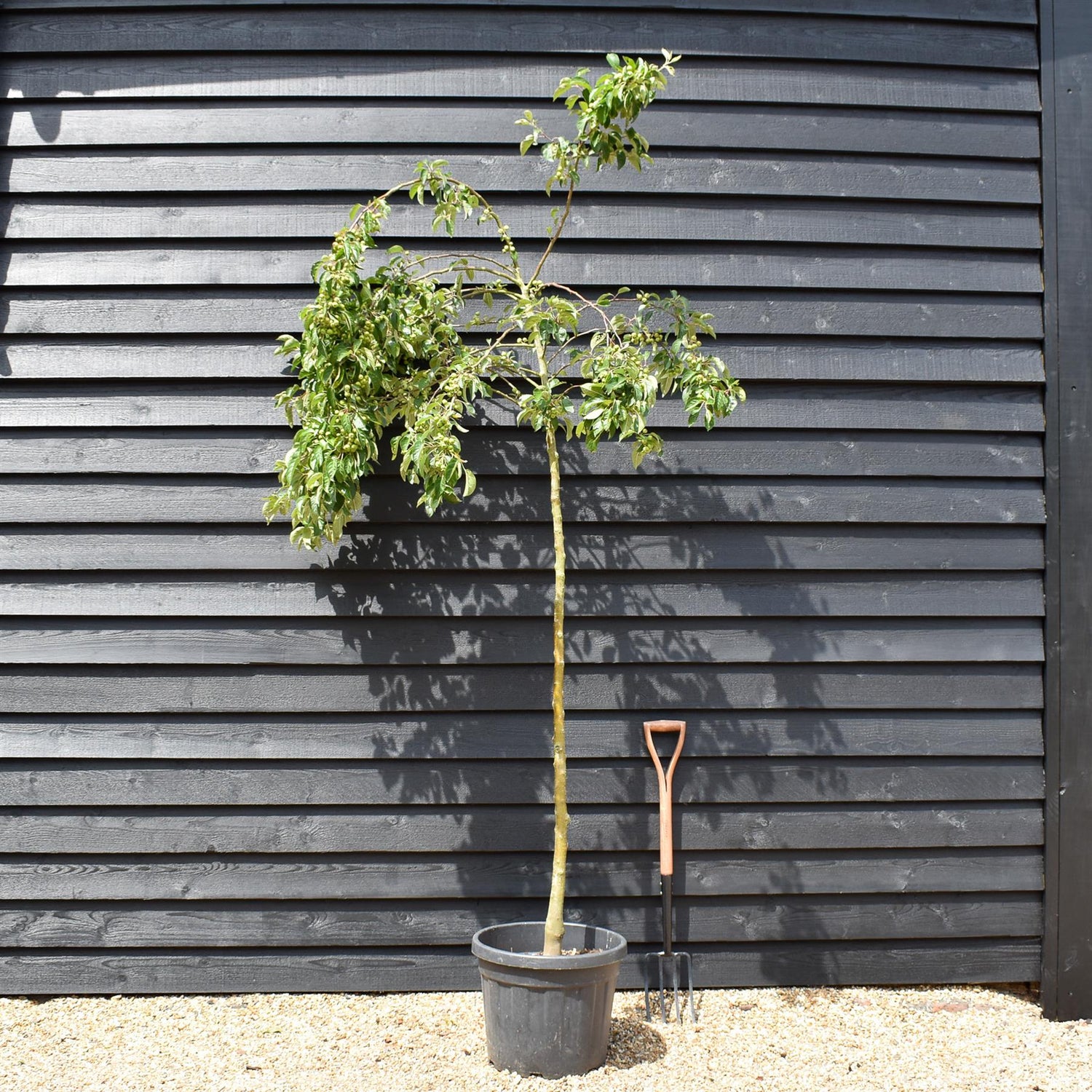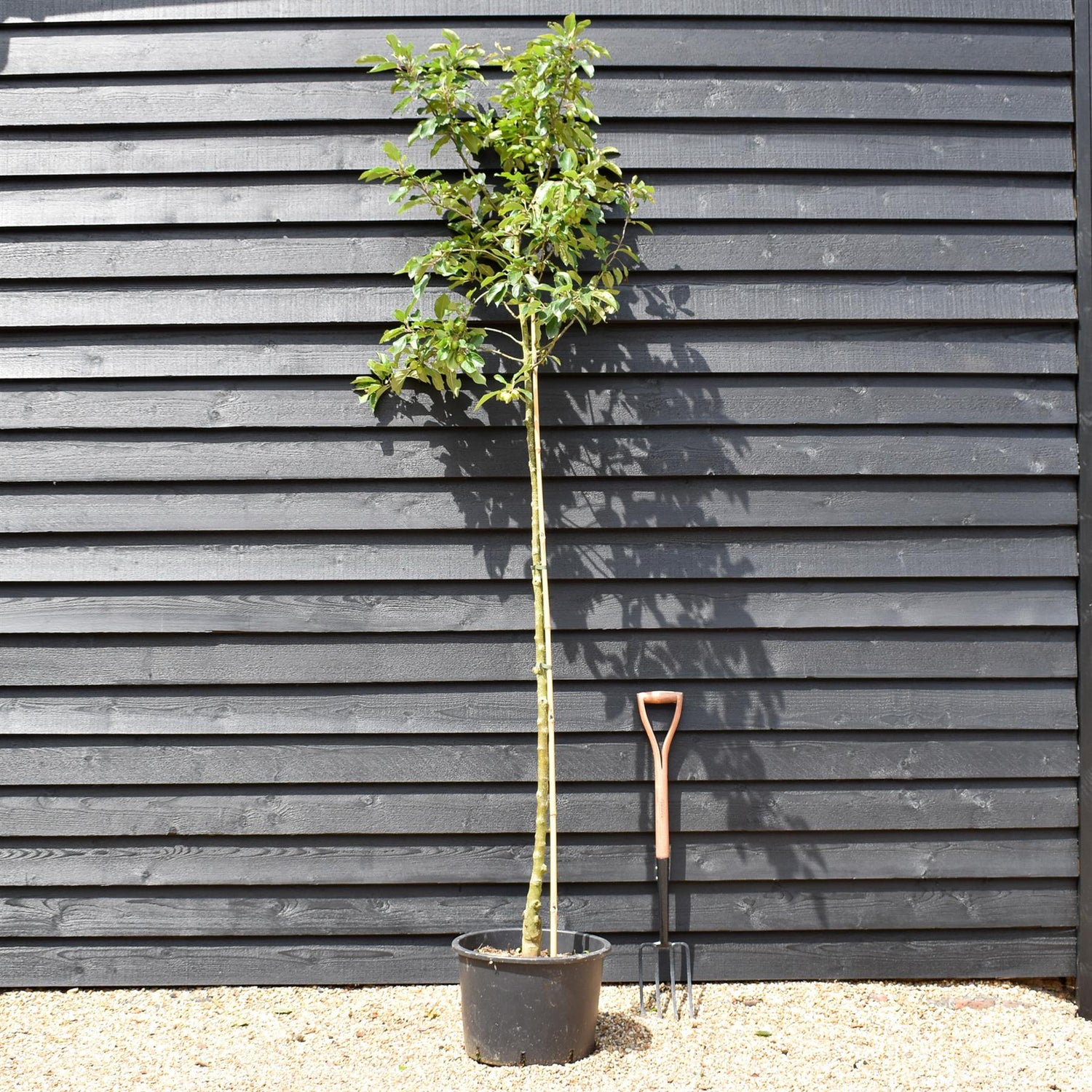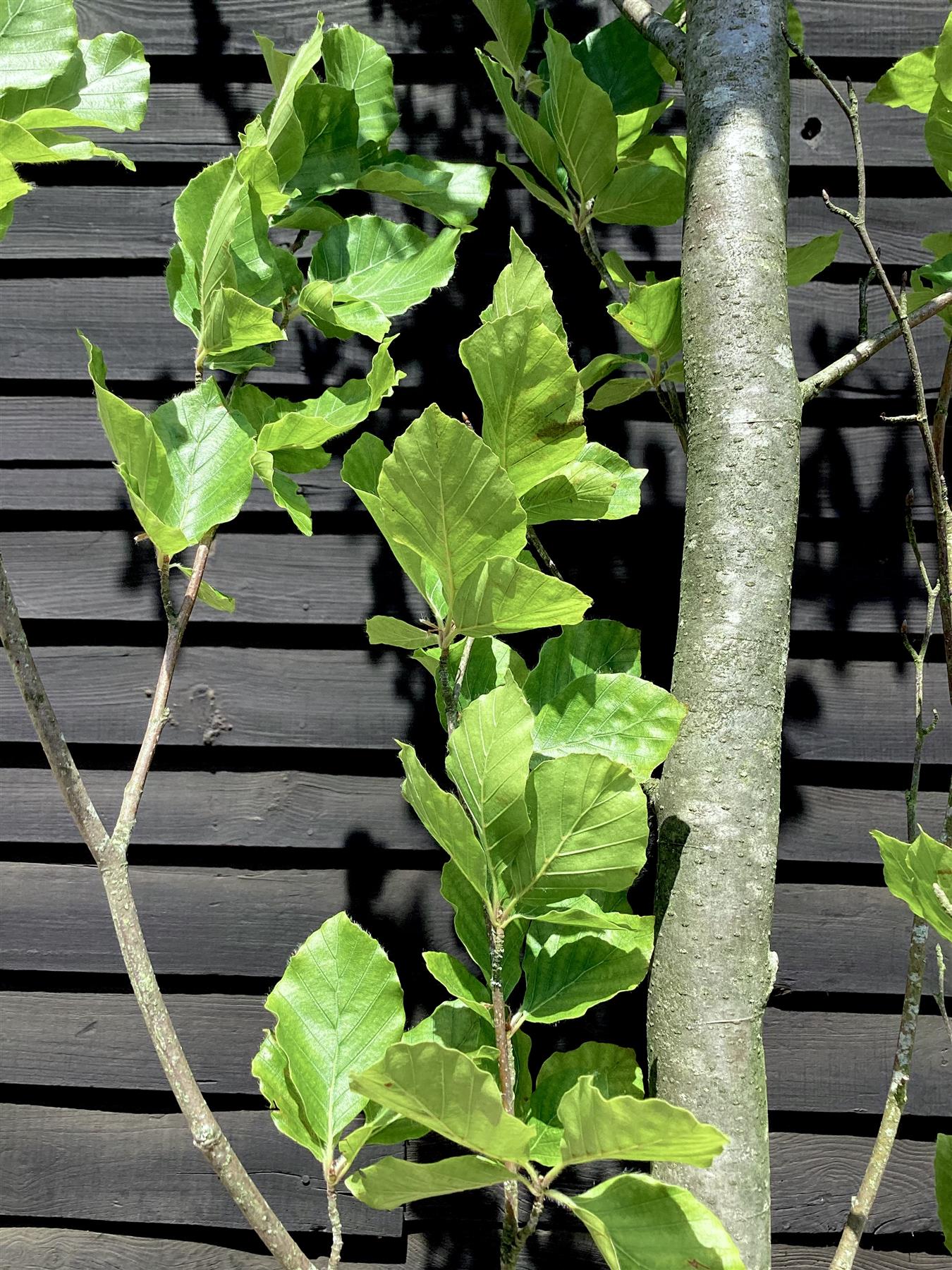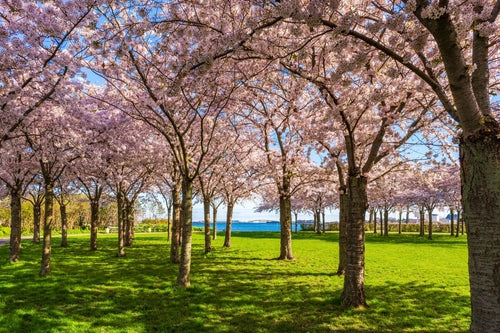781 products
781 products
Sort by:
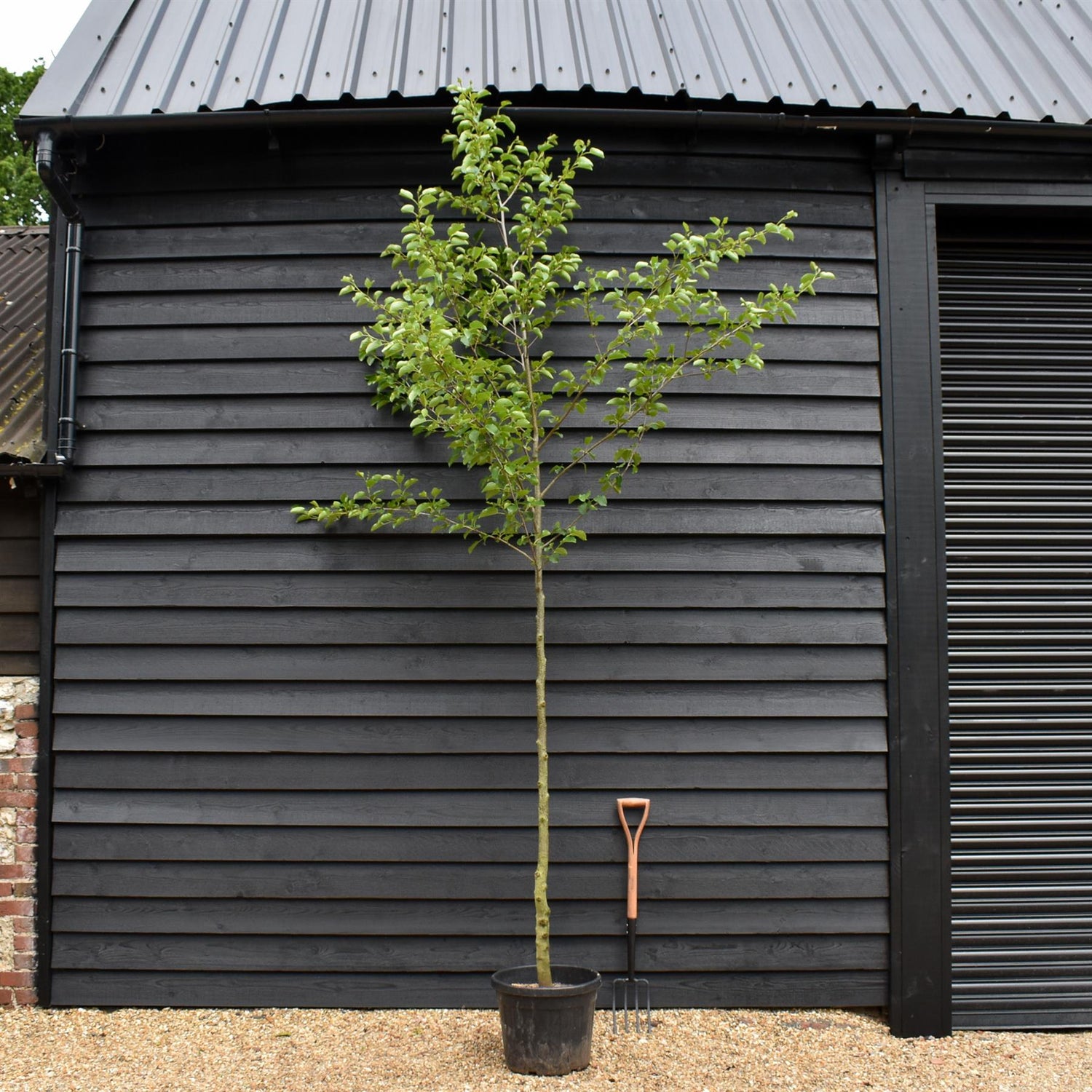
Alder tree | Alnus Cordata - Clear Stem - Height 300-350cm - Girth 8-10cm - 45lt
£255.00
Unit price perAlder tree | Alnus Cordata - Clear Stem - Height 300-350cm - Girth 8-10cm - 45lt
£255.00
Unit price perAlnus cordata, commonly known as the Italian alder, is a medium to large deciduous tree native to southern Italy and parts of Corsica. It belongs to the Betulaceae family and is highly valued for its ability to thrive in poor soils and challenging environmental conditions. This species is often planted for ornamental purposes, soil improvement, and as a windbreak due to its robust growth and adaptability.
The tree can reach heights of up to 25-30 metres (82-98 feet) with a trunk diameter of about 1 metre (3.3 feet). It has a relatively narrow, conical crown, which makes it an attractive choice for landscaping in urban and rural environments. The bark is smooth and greyish-brown when young, developing shallow fissures with age.
Alnus cordata is noted for its distinctive heart-shaped (cordate) leaves, which are bright green and glossy, measuring 7-12 cm in length. Unlike some other alders, the leaves of A. cordata remain on the tree until late autumn, giving it an extended season of greenery. In spring, it produces small, inconspicuous catkins, with male catkins being pendulous and yellowish, and female catkins more compact and upright. These develop into small, woody cones that persist on the tree through winter.
One of the key characteristics of Alnus cordata is its nitrogen-fixing ability. Like other alders, it forms a symbiotic relationship with the bacterium Frankia, which allows it to fix atmospheric nitrogen into the soil. This quality makes it an excellent species for improving soil fertility, particularly in degraded or nutrient-poor areas.
Overall, the Italian alder is a resilient and versatile tree, well-suited to a variety of landscapes, including wet or compacted soils, and is an important species for ecological restoration projects.

Sweet gum | Liquidambar styraciflua 'Worplesdon' - Height 200-250cm - Girth 8-10cm - 40lt
£255.00
Unit price perSweet gum | Liquidambar styraciflua 'Worplesdon' - Height 200-250cm - Girth 8-10cm - 40lt
£255.00
Unit price perSweet Chestnut | Castanea sativa - Height 250-300cm - Girth 10-12cm - 45lt
£255.00
Unit price perSweet Chestnut | Castanea sativa - Height 250-300cm - Girth 10-12cm - 45lt
£255.00
Unit price perCastanea sativa, commonly known as the Sweet Chestnut tree, is a majestic and long-lived species native to Europe and parts of Asia Minor. Belonging to the Fagaceae family, it stands as a symbol of strength and resilience in many cultures, with its towering stature and deeply furrowed bark.
The leaves of Castanea sativa are distinctively long and lance-shaped, with serrated edges that give them a rough texture. During the spring and summer, the canopy is adorned with clusters of creamy-white flowers, which give way to spiky green husks containing the prized sweet chestnuts in autumn.
Sweet chestnuts, often referred to simply as "chestnuts," have been a staple food source for centuries, cherished for their rich, nutty flavor and versatile culinary applications. Whether roasted over an open fire, boiled and mashed into a creamy puree, or incorporated into hearty stews and stuffing recipes, chestnuts are celebrated in both sweet and savory dishes throughout the UK.
Beyond their culinary significance, sweet chestnut trees play a vital ecological role, providing habitat and sustenance for a diverse array of wildlife. Birds, such as blue tits and nuthatches, feast on the tree's seeds, while small mammals like squirrels rely on them as a seasonal food source.
Despite their resilience, sweet chestnut trees face threats from various pests and diseases, including chestnut blight and ink disease, which have impacted populations in some regions. Conservation efforts aim to preserve these iconic trees and their valuable genetic diversity for future generations to enjoy.
Pink Upright Crab Apple 'Red Obelisk' | Malus - Clear Stem - Height 250-300cm - Girth 6-8cm - 45lt
£255.00
Unit price perPink Upright Crab Apple 'Red Obelisk' | Malus - Clear Stem - Height 250-300cm - Girth 6-8cm - 45lt
£255.00
Unit price perCrab apple | Malus 'Butterball' - Height 250-300cm - Girth 6-8cm - 45lt
£255.00
Unit price perCrab apple | Malus 'Butterball' - Height 250-300cm - Girth 6-8cm - 45lt
£255.00
Unit price perMalus 'Butterball', a highly ornamental crabapple tree, is distinguished by its prolific golden-yellow fruit and its breathtaking, fragrant spring blossoms. These blossoms are dense, adding a profusion of white to landscapes. The tree is renowned for its decorative appeal, not only offering visual pleasure but also serving as an attraction for various wildlife, especially birds and pollinators, enriching biodiversity within its vicinity.
The fruits of Malus 'Butterball' are small, with a buttery, yellow hue, persisting into winter, adding vibrant winter interest to gardens and landscapes. The presence of these fruits also serves as a substantial food source for wildlife during the colder months when food is scarce.
This variety of crabapple is celebrated for its compact nature, making it a preferred choice for smaller gardens or spaces where larger trees would be impractical. It is also prized for its resilience, withstanding different environmental conditions, thus making it a versatile choice for different landscapes.
Besides its aesthetic and ecological values, Malus 'Butterball' is also appreciated for its low maintenance requirements. It's relatively disease-resistant compared to other crabapple varieties, making it a durable and long-lasting addition to a range of horticultural settings. The tree’s versatility and beauty make it a popular choice among garden enthusiasts and landscape designers alike.
Crab Apple 'Mokum' | Malus - Clear Stem - Height 250-300cm - Girth 6-8cm - 45lt
£255.00
Unit price perCrab Apple 'Mokum' | Malus - Clear Stem - Height 250-300cm - Girth 6-8cm - 45lt
£255.00
Unit price perMalus 'Mokum', commonly known as the Mokum Crab Apple, is a striking deciduous tree celebrated for its vibrant foliage and ornamental appeal. Reaching heights of 5–7 meters with a spread of 4–6 meters, it features an upright, ovoid crown that adds vertical interest to gardens and landscapes .
In spring, 'Mokum' bursts into bloom with an abundance of large, deep pink to magenta flowers, which are both visually stunning and attractive to pollinators like bees and butterflies . These blossoms emerge alongside purplish bronze-red leaves that mature to a rich purple-green in summer, transitioning to golden-yellow hues in autumn.
As the season progresses, small, red to purplish-red crab apples develop, persisting on the tree into late autumn and providing a valuable food source for birds . 'Mokum' thrives in full sun to partial shade and adapts well to various soil types, including clay, loam, and sand, provided they are well-drained.
With its compact form, disease resistance, and year-round visual interest, Malus 'Mokum' is an excellent choice for small gardens, urban settings, or as a focal point in larger landscapes.
Crab Apple 'Evereste' | Malus - Clear Stem - Height 250-300cm - Girth 6-8cm - 45lt
£255.00
Unit price perCrab Apple 'Evereste' | Malus - Clear Stem - Height 250-300cm - Girth 6-8cm - 45lt
£255.00
Unit price perCrab Apple 'John Downie' | Malus - Clear Stem - Height 250-300cm - Girth 6-8cm - 45lt
£255.00
Unit price perCrab Apple 'John Downie' | Malus - Clear Stem - Height 250-300cm - Girth 6-8cm - 45lt
£255.00
Unit price perCrab Apple 'Red Siberian' | Malus - Clear Stem - Height 250-300cm - Girth 6-8cm - 45lt
£255.00
Unit price perCrab Apple 'Red Siberian' | Malus - Clear Stem - Height 250-300cm - Girth 6-8cm - 45lt
£255.00
Unit price perMalus 'Red Siberian' is a hardy, ornamental crabapple known for its beautiful seasonal interest and adaptability. This small deciduous tree typically grows to about 15–25 feet tall with a spreading, rounded crown. In spring, it produces an abundance of fragrant white to pale pink blossoms that attract pollinators such as bees and butterflies. These are followed by clusters of small, bright red fruits in late summer to fall, which persist into winter and provide a valuable food source for birds and wildlife.
The glossy green foliage turns yellow in autumn, adding another layer of seasonal color. 'Red Siberian' is often used as a rootstock or in ornamental plantings due to its cold tolerance and disease resistance. It thrives in full sun and well-drained soil, making it an excellent choice for temperate climates. This tree is ideal for adding year-round interest to gardens, landscapes, or naturalized areas with minimal maintenance required.
Erman's Birch | Betula ermanii - Height 200-250cm - Girth 8-10cm - 45lt
£255.00
Unit price perErman's Birch | Betula ermanii - Height 200-250cm - Girth 8-10cm - 45lt
£255.00
Unit price perSweet Gum | Liquidambar styraciflua 'Lane Roberts' - Height 200-250cm - Girth 8-10cm - 40lt
£255.00
Unit price perSweet Gum | Liquidambar styraciflua 'Lane Roberts' - Height 200-250cm - Girth 8-10cm - 40lt
£255.00
Unit price perUpright Field maple | Acer campestre 'Fastigiatum' - Clear Stem - Height 250-300cm - Girth 6-8cm - 45lt
£255.00
Unit price perUpright Field maple | Acer campestre 'Fastigiatum' - Clear Stem - Height 250-300cm - Girth 6-8cm - 45lt
£255.00
Unit price perThe Acer campestre 'Fastigiatum, commonly known as the upright field maple, is a popular cultivar of the field maple tree, native to Europe and parts of Asia. Known for its compact and columnar growth habit, this tree is often used in urban landscaping, parks, and gardens due to its ability to thrive in various environments.
The 'Fastigiatum' cultivar is characterised by its narrow, upright form, making it ideal for smaller spaces or as a vertical accent in landscape designs. It typically grows to a height of 10 to 15 metres, with a width of about 4 to 6 metres. The tree's branches grow tightly together, giving it a dense, pillar-like appearance. This makes it a preferred choice for creating natural screens or for lining avenues and pathways.
The leaves of the Acer campestre 'Fastigiatum' are small, five-lobed, and dark green during the growing season, turning to a golden yellow in autumn, adding seasonal interest to any setting. The tree produces small, inconspicuous yellow-green flowers in spring, followed by winged seeds, known as samaras, that are typical of maple trees.
One of the advantages of this cultivar is its hardiness and adaptability. It can tolerate a wide range of soil types, including clay, loam, and sandy soils, and is resistant to pollution, making it suitable for urban areas. The tree is also drought-tolerant once established, though it prefers well-drained soil with moderate moisture.
Acer campestre 'Fastigiatum' requires minimal maintenance, with occasional pruning to maintain its shape. It is relatively pest-free and can thrive in full sun to partial shade. Overall, this upright field maple is a versatile and attractive choice for landscapes, offering structure, colour, and resilience.
Red Alder | Alnus rubra - Height 300-350cm - Girth 10-12cm - 55lt
£255.00
Unit price perRed Alder | Alnus rubra - Height 300-350cm - Girth 10-12cm - 55lt
£255.00
Unit price perAlnus rubra, commonly known as red alder, is a fast-growing deciduous tree native to the west coast of North America, from Alaska to California. It is easily recognized by its smooth, gray bark and broad, ovate leaves with serrated edges that turn yellow in the fall. Red alder typically grows 40 to 80 feet tall and thrives in moist, well-drained soils, often along rivers, streams, and in disturbed areas. One of its most notable ecological traits is its ability to fix atmospheric nitrogen through a symbiotic relationship with bacteria in its root nodules. This natural enrichment improves soil fertility and supports forest regeneration, making it an important pioneer species in reforestation and ecological restoration projects. Red alder also provides habitat and food for various wildlife species, including birds and insects. In addition to its ecological value, its light-colored wood is used in furniture, cabinetry, and paper production due to its workability and smooth finish.
Fagus Sylvatica Dawkye | Dawyck Beech - 450-500cm, 50lt
£260.00
Unit price perFagus Sylvatica Dawkye | Dawyck Beech - 450-500cm, 50lt
£260.00
Unit price perAlnus Cordata - Alder tree - Height 280-300cm - 30lt
£260.00
Unit price perAlnus Cordata - Alder tree - Height 280-300cm - 30lt
£260.00
Unit price perAlnus cordata, commonly known as the Italian alder, is a medium to large deciduous tree native to southern Italy and parts of Corsica. It belongs to the Betulaceae family and is highly valued for its ability to thrive in poor soils and challenging environmental conditions. This species is often planted for ornamental purposes, soil improvement, and as a windbreak due to its robust growth and adaptability.
The tree can reach heights of up to 25-30 metres (82-98 feet) with a trunk diameter of about 1 metre (3.3 feet). It has a relatively narrow, conical crown, which makes it an attractive choice for landscaping in urban and rural environments. The bark is smooth and greyish-brown when young, developing shallow fissures with age.
Alnus cordata is noted for its distinctive heart-shaped (cordate) leaves, which are bright green and glossy, measuring 7-12 cm in length. Unlike some other alders, the leaves of A. cordata remain on the tree until late autumn, giving it an extended season of greenery. In spring, it produces small, inconspicuous catkins, with male catkins being pendulous and yellowish, and female catkins more compact and upright. These develop into small, woody cones that persist on the tree through winter.
One of the key characteristics of Alnus cordata is its nitrogen-fixing ability. Like other alders, it forms a symbiotic relationship with the bacterium Frankia, which allows it to fix atmospheric nitrogen into the soil. This quality makes it an excellent species for improving soil fertility, particularly in degraded or nutrient-poor areas.
Overall, the Italian alder is a resilient and versatile tree, well-suited to a variety of landscapes, including wet or compacted soils, and is an important species for ecological restoration projects.
Ligustrum Jon Pom Pom 3 Ball | Privet Topiary - Height 150cm - 35lt
£260.00
Unit price perLigustrum Jon Pom Pom 3 Ball | Privet Topiary - Height 150cm - 35lt
£260.00
Unit price perAlnus Glutinosa - Alder tree - Feathered - Height 280-300cm - Girth 6-8cm -30lt
£260.00
Unit price perAlnus Glutinosa - Alder tree - Feathered - Height 280-300cm - Girth 6-8cm -30lt
£260.00
Unit price perAlnus glutinosa, commonly known as the black alder, is a deciduous tree native to Europe, including the British Isles. It is a versatile and resilient species, often found thriving in wetland areas, riverbanks, and marshes, where its roots can help stabilise the soil and prevent erosion.
The black alder typically grows to a height of 20-30 metres, with a broad, conical crown that becomes more rounded with age. Its bark is dark brown and fissured, often developing a distinctive, almost black hue as the tree matures. One of its most notable features is its leaves, which are rounded with a slightly serrated edge and a glossy, dark green surface that turns yellow in the autumn.
In early spring, Alnus glutinosa produces catkins – the male catkins are long and yellowish, while the female ones are shorter and reddish. These mature into woody, cone-like fruits that persist on the tree throughout the winter, providing a valuable food source for wildlife. The black alder also forms symbiotic relationships with nitrogen-fixing bacteria in its root nodules, enriching the soil and benefiting neighbouring plants.
Due to its adaptability and ecological benefits, Alnus glutinosa is often used in reforestation and habitat restoration projects. It supports a wide range of wildlife, including insects, birds, and aquatic species, making it a vital component of the British natural landscape.
Caucasian wingnut | Pterocarya fraxinifolia - Height 220-250cm - Girth 12-14cm - 45lt
£260.00
Unit price perCaucasian wingnut | Pterocarya fraxinifolia - Height 220-250cm - Girth 12-14cm - 45lt
£260.00
Unit price perPterocarya fraxinifolia, commonly known as the Caucasian wingnut, is a large, fast-growing deciduous tree prized for its bold structure and lush, tropical-looking foliage. Native to the Caucasus and northern Iran, it typically grows 20 to 30 meters tall with a wide, spreading canopy reaching 15 to 20 meters. Its elegant, pinnate leaves create a soft, feathery effect, providing dense summer shade. In late spring and summer, the tree produces striking, long, hanging catkins that develop into chains of winged seeds, adding ornamental interest. Pterocarya fraxinifolia thrives in moist, fertile soils and is ideal for parklands, large gardens, and riverside plantings. Its impressive size and distinctive appearance make it a standout feature in any expansive landscape.
Showing 468/781


